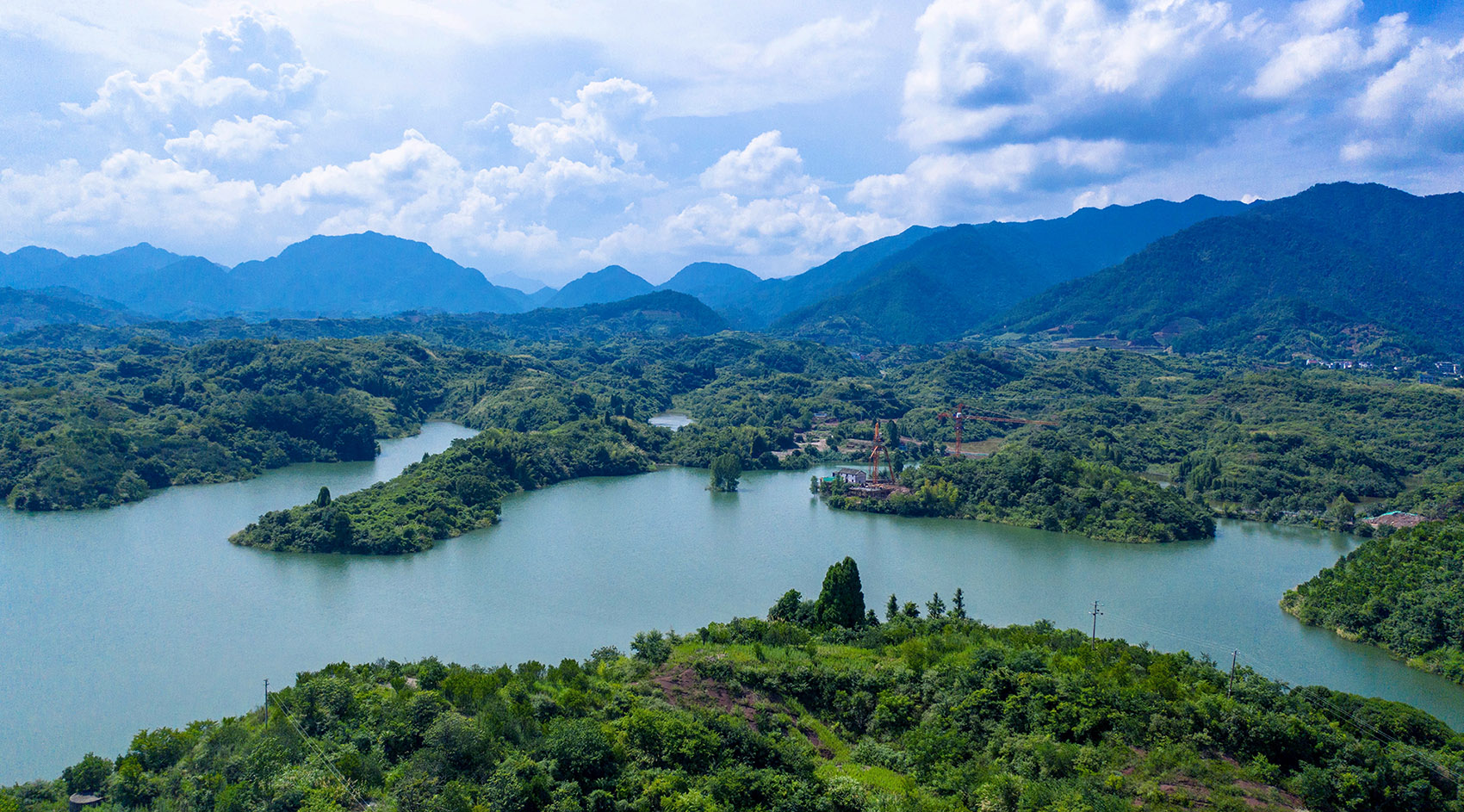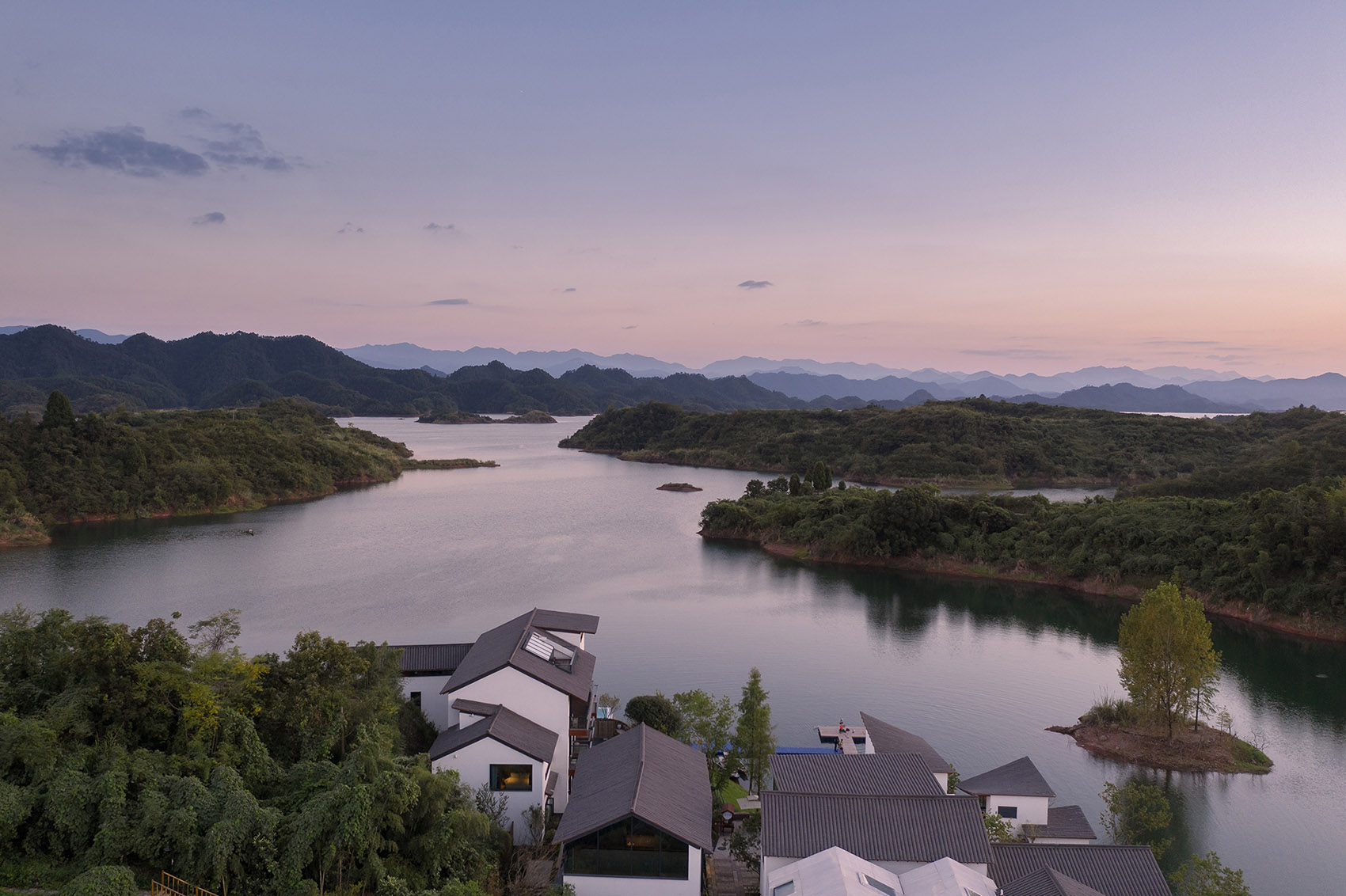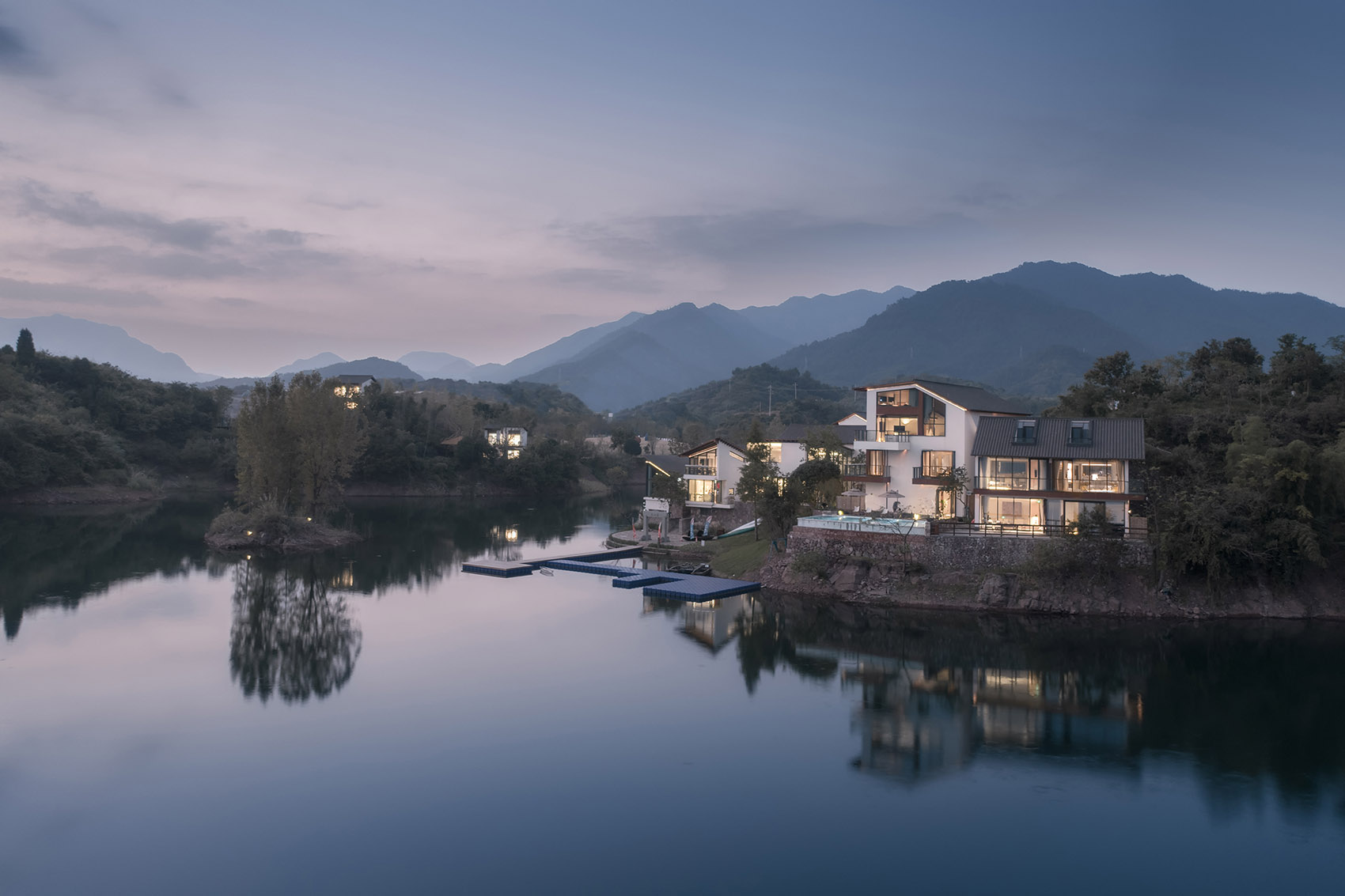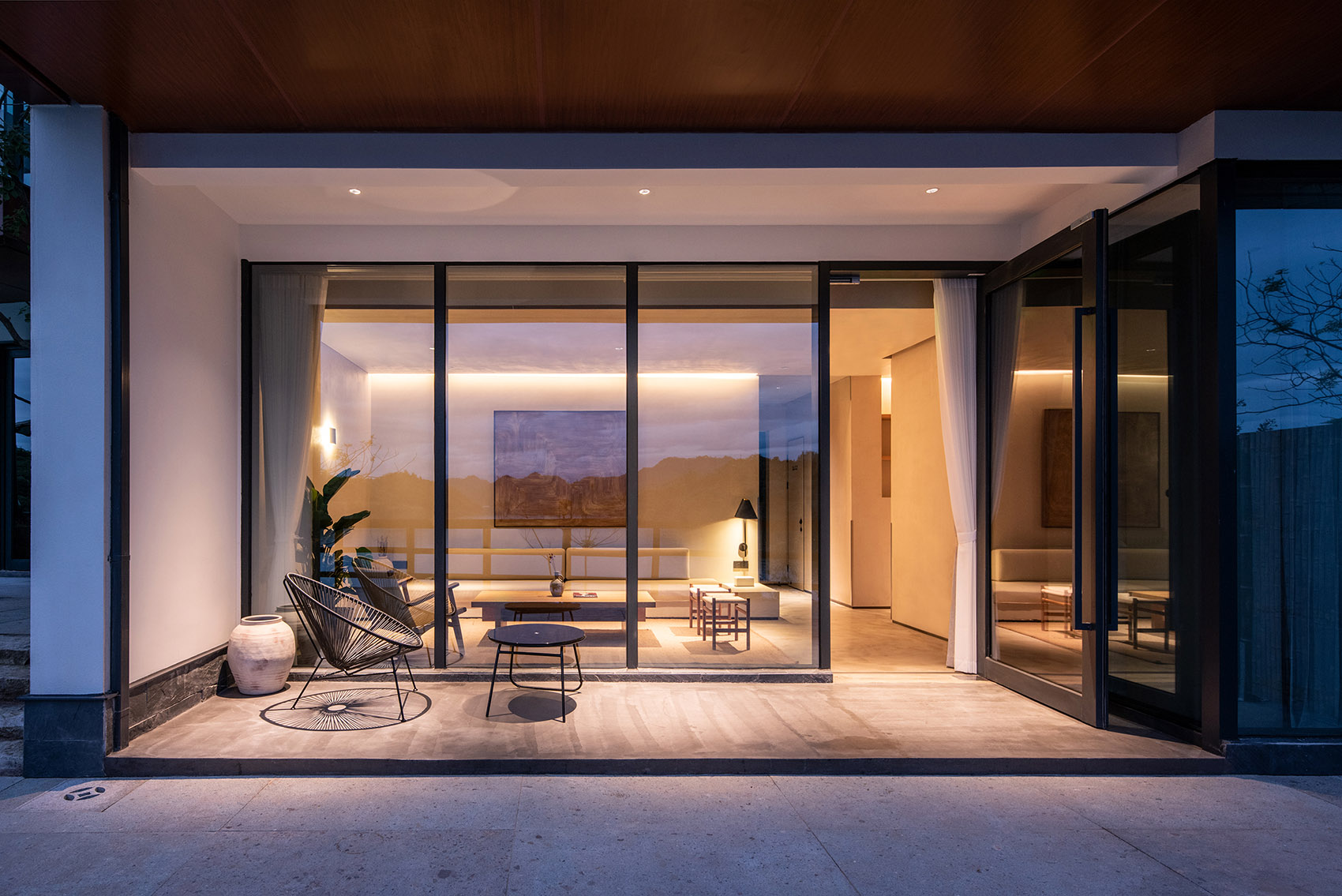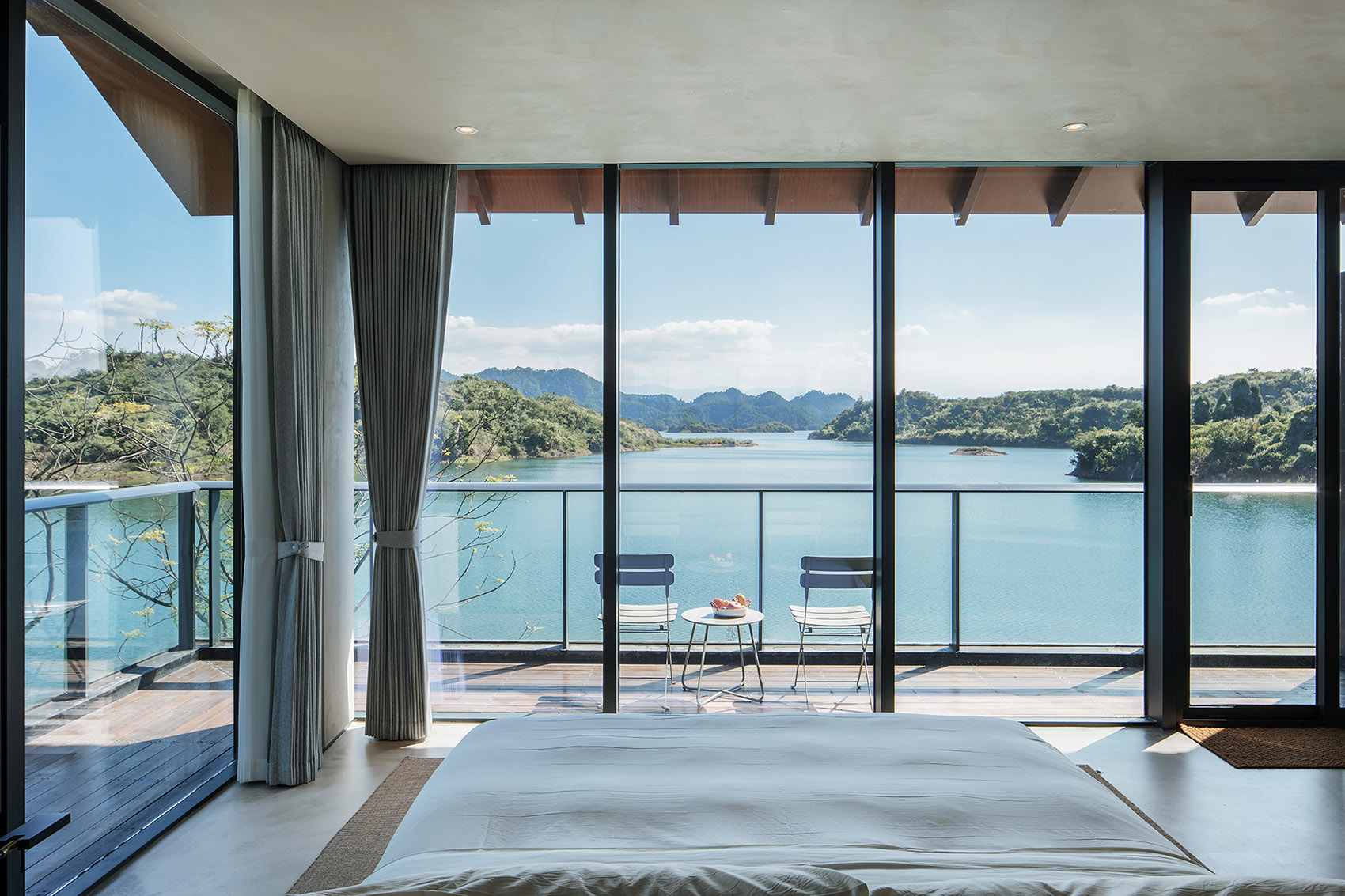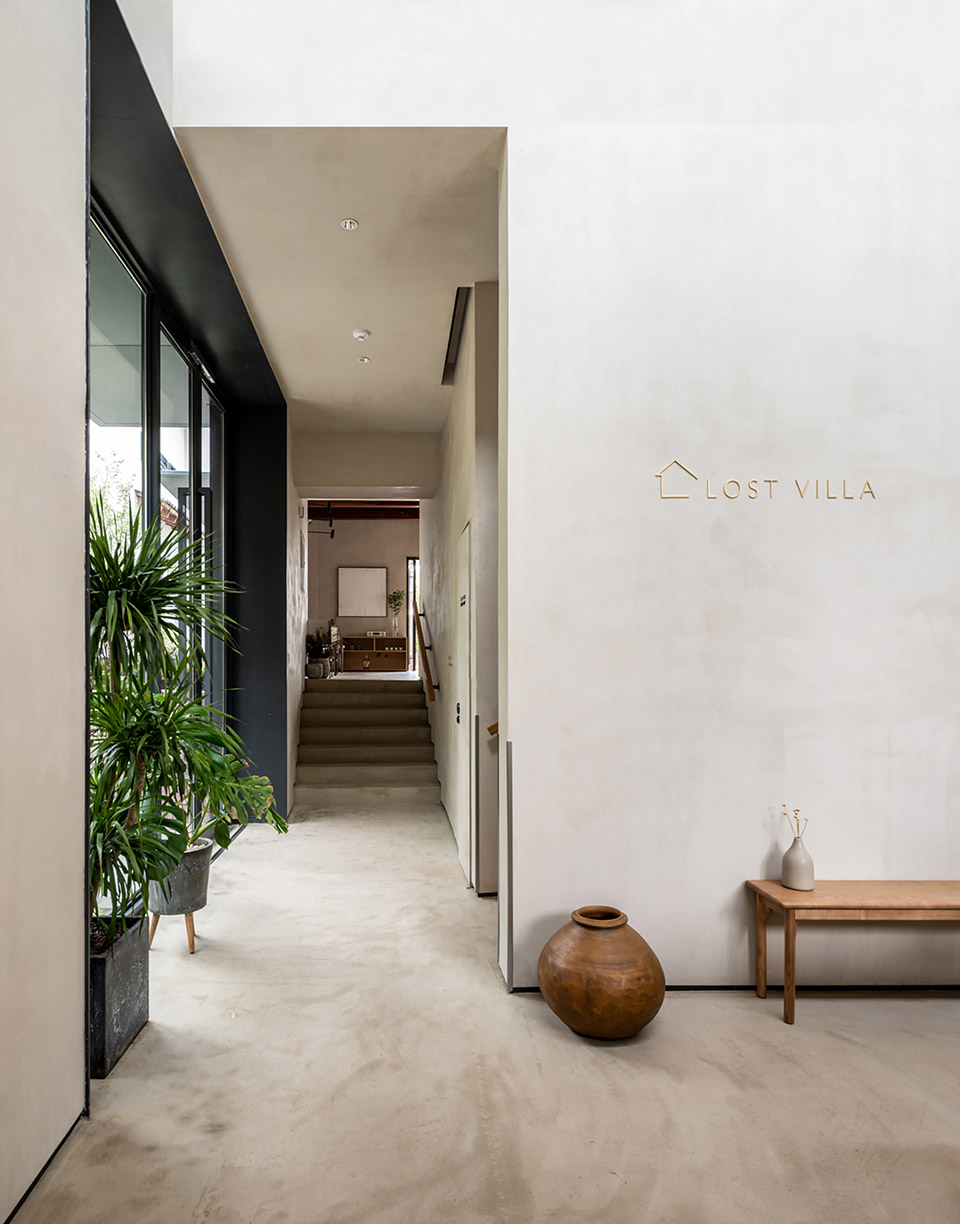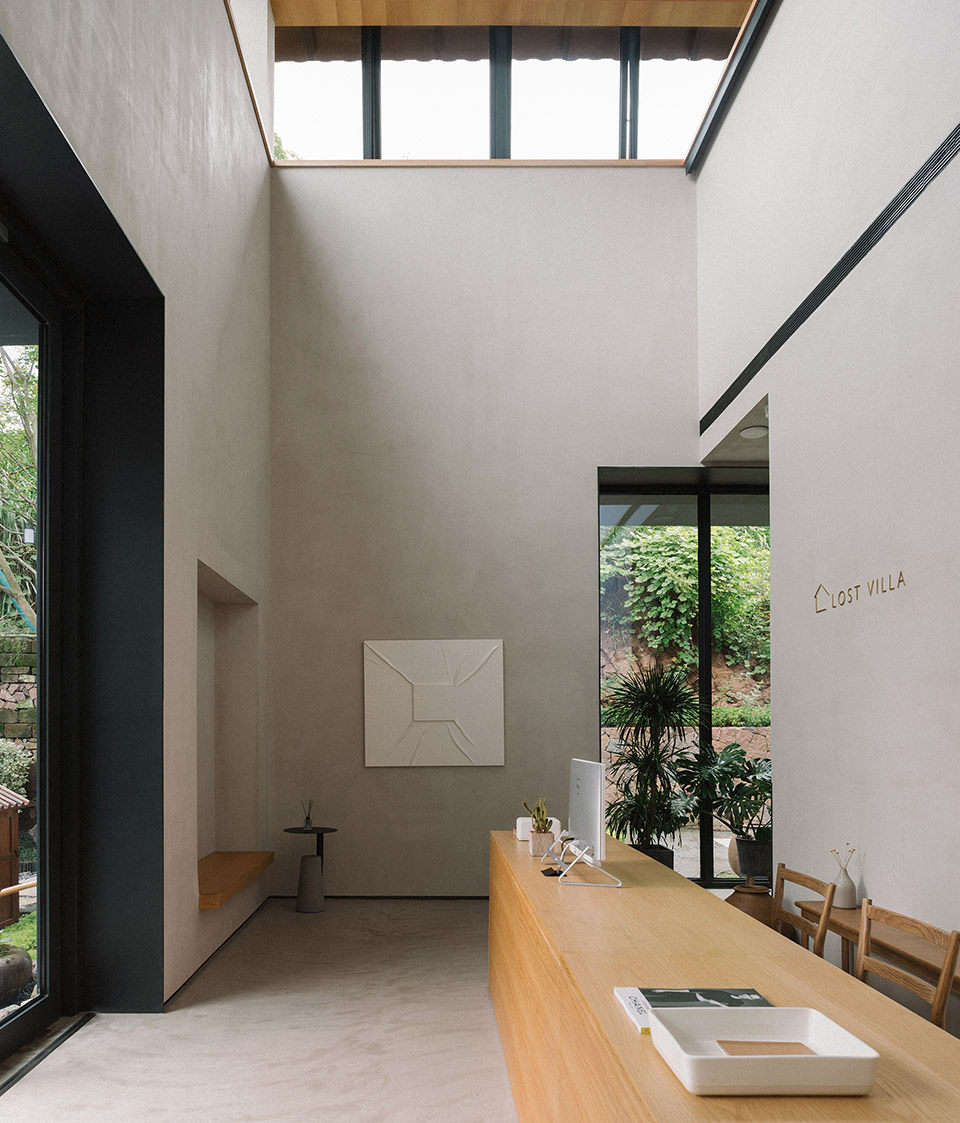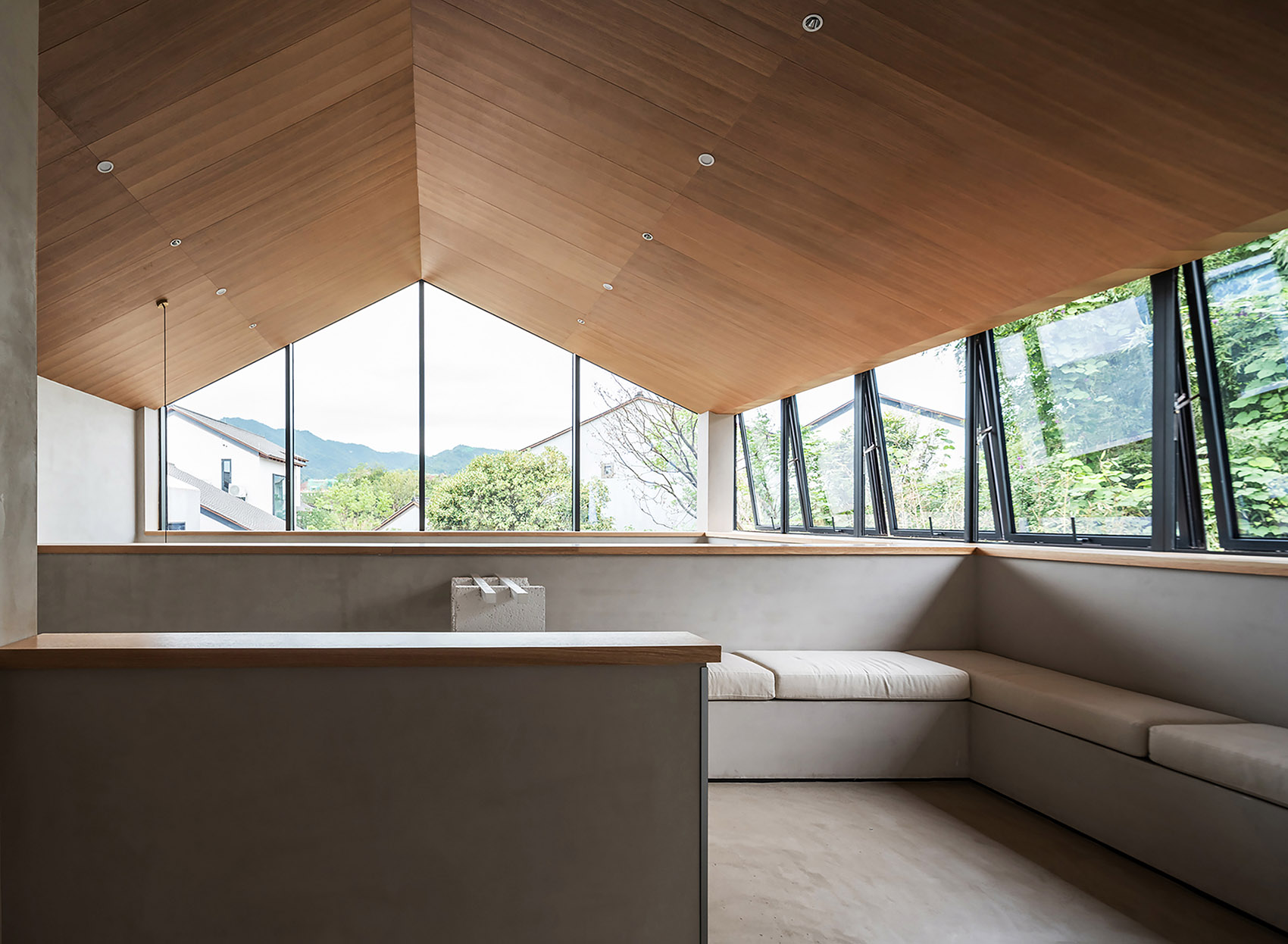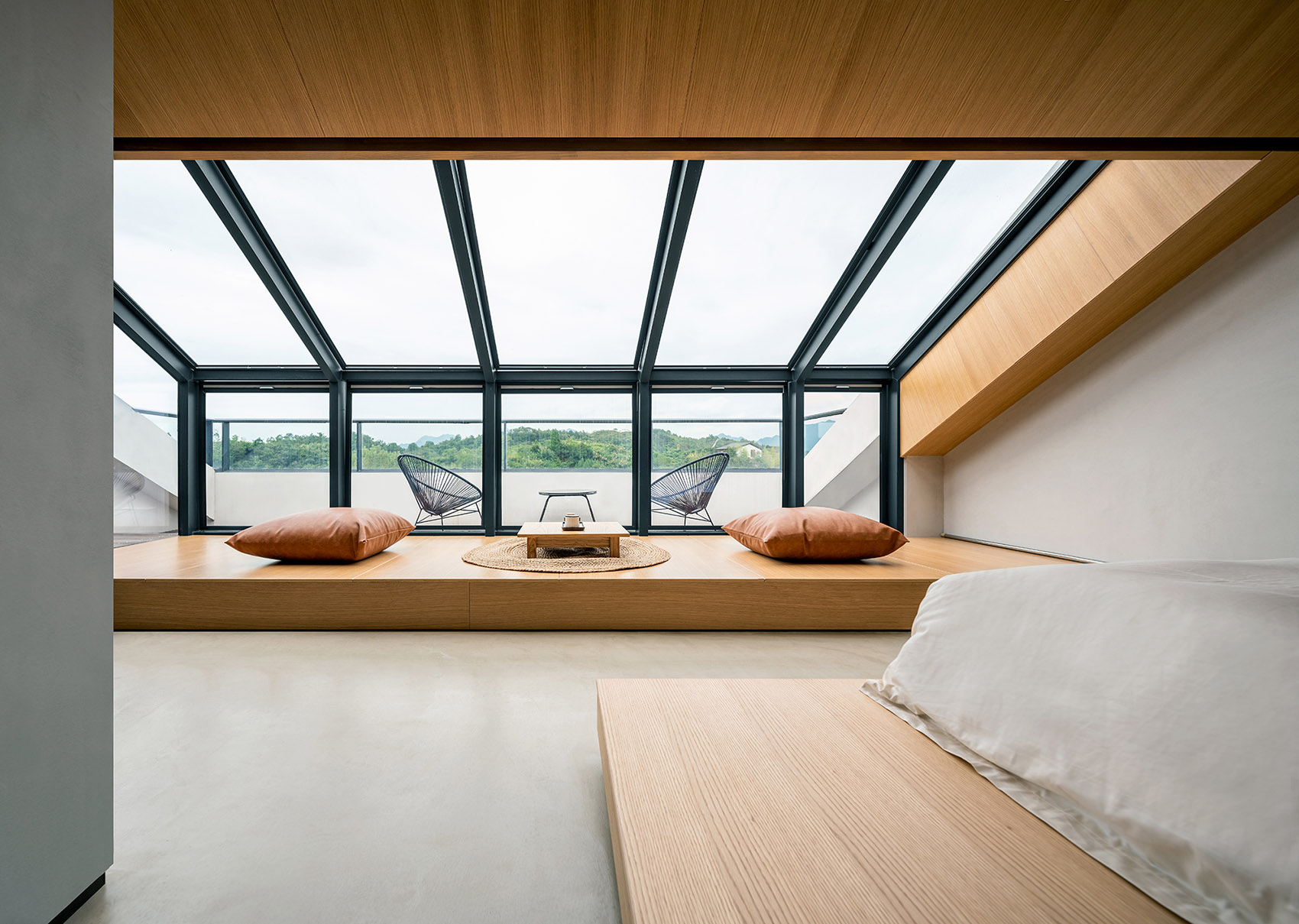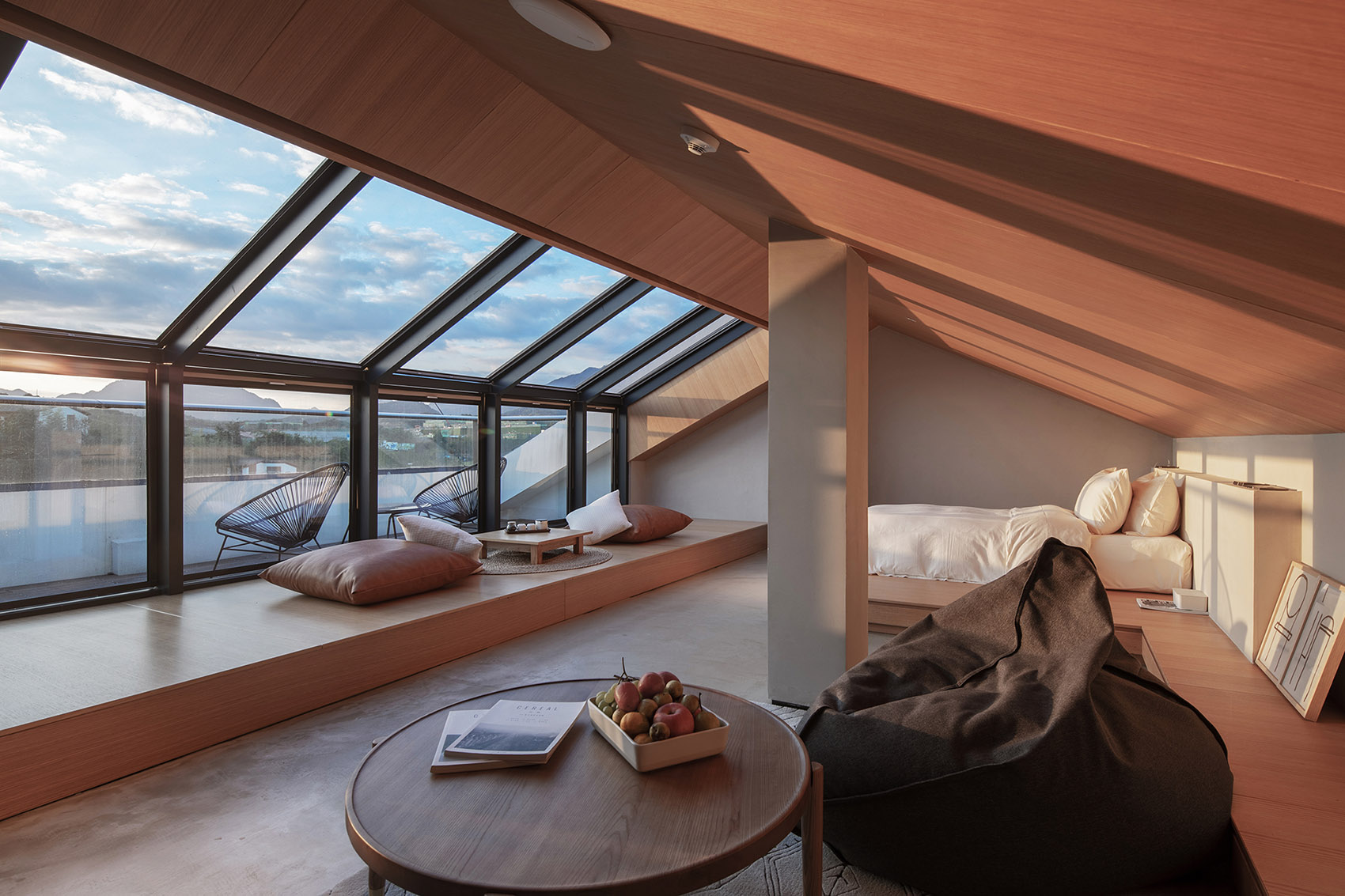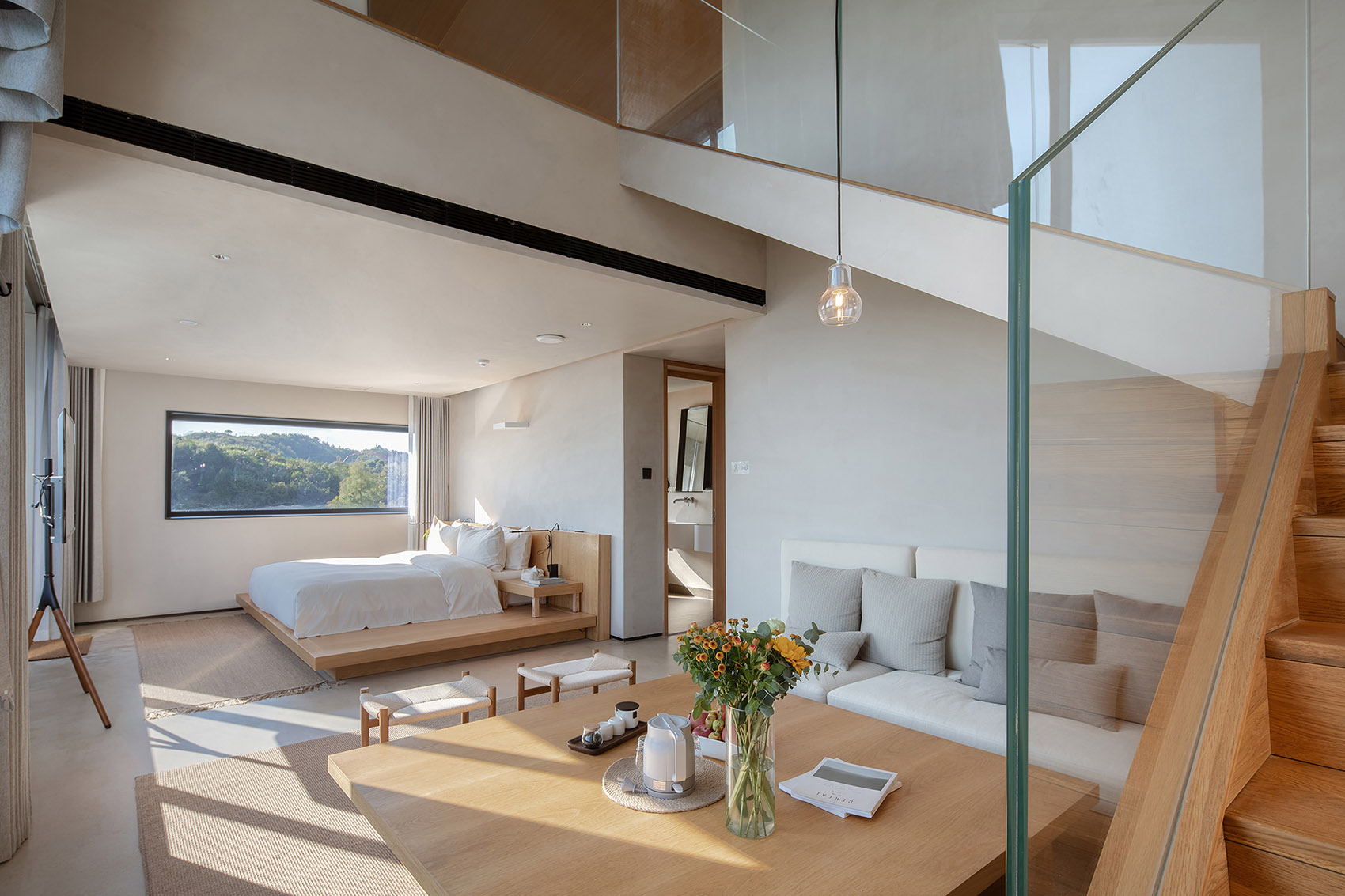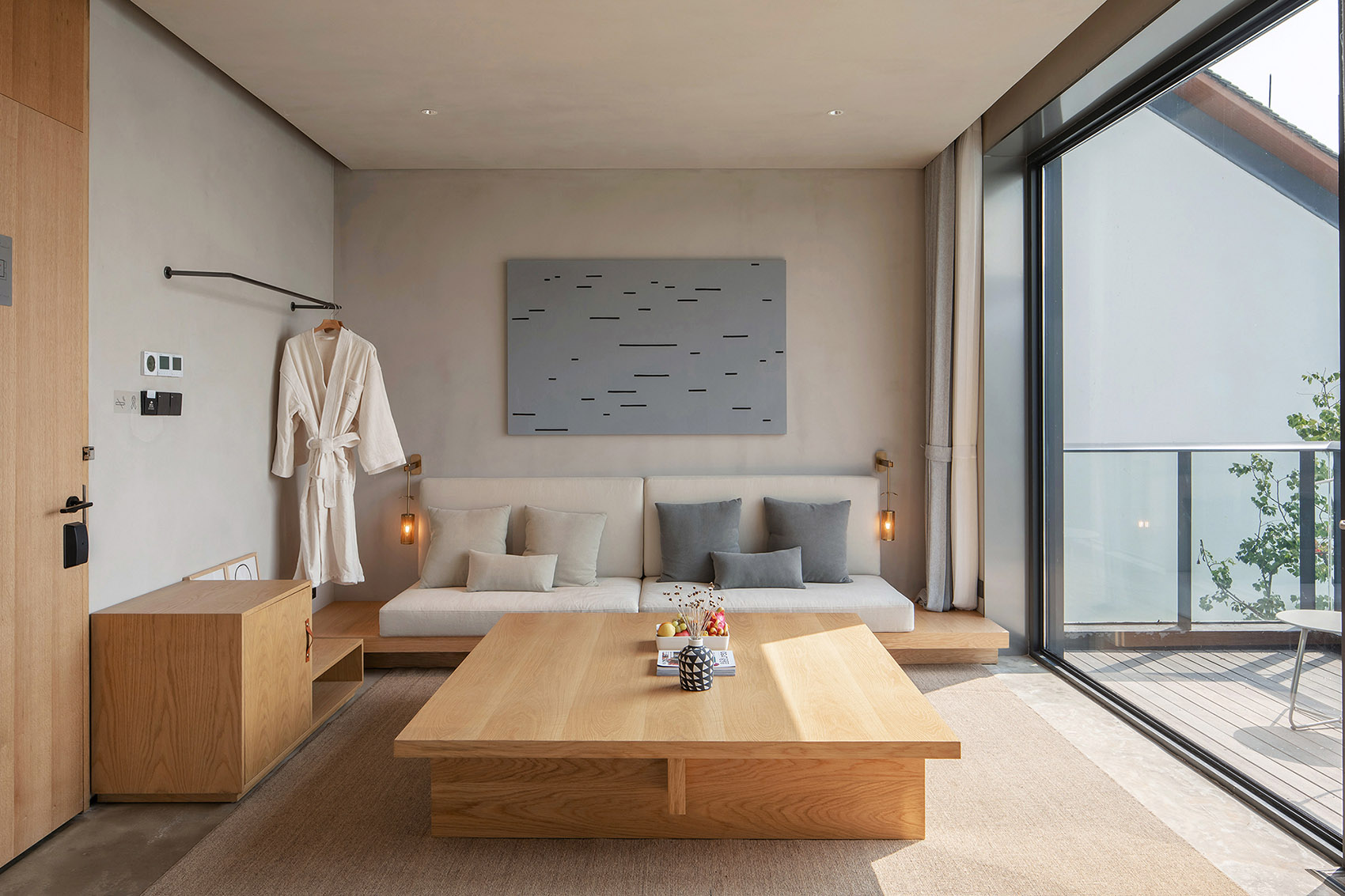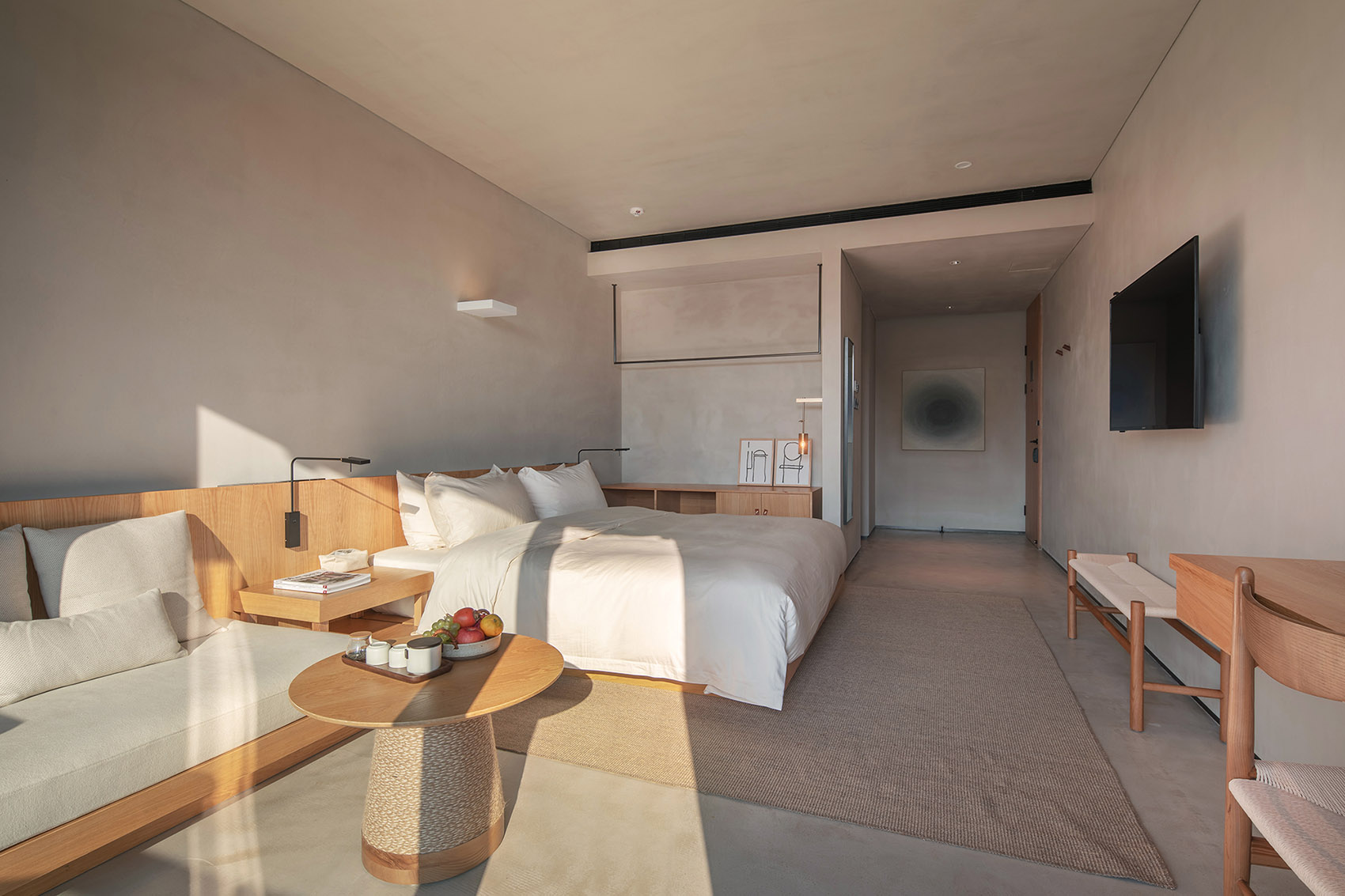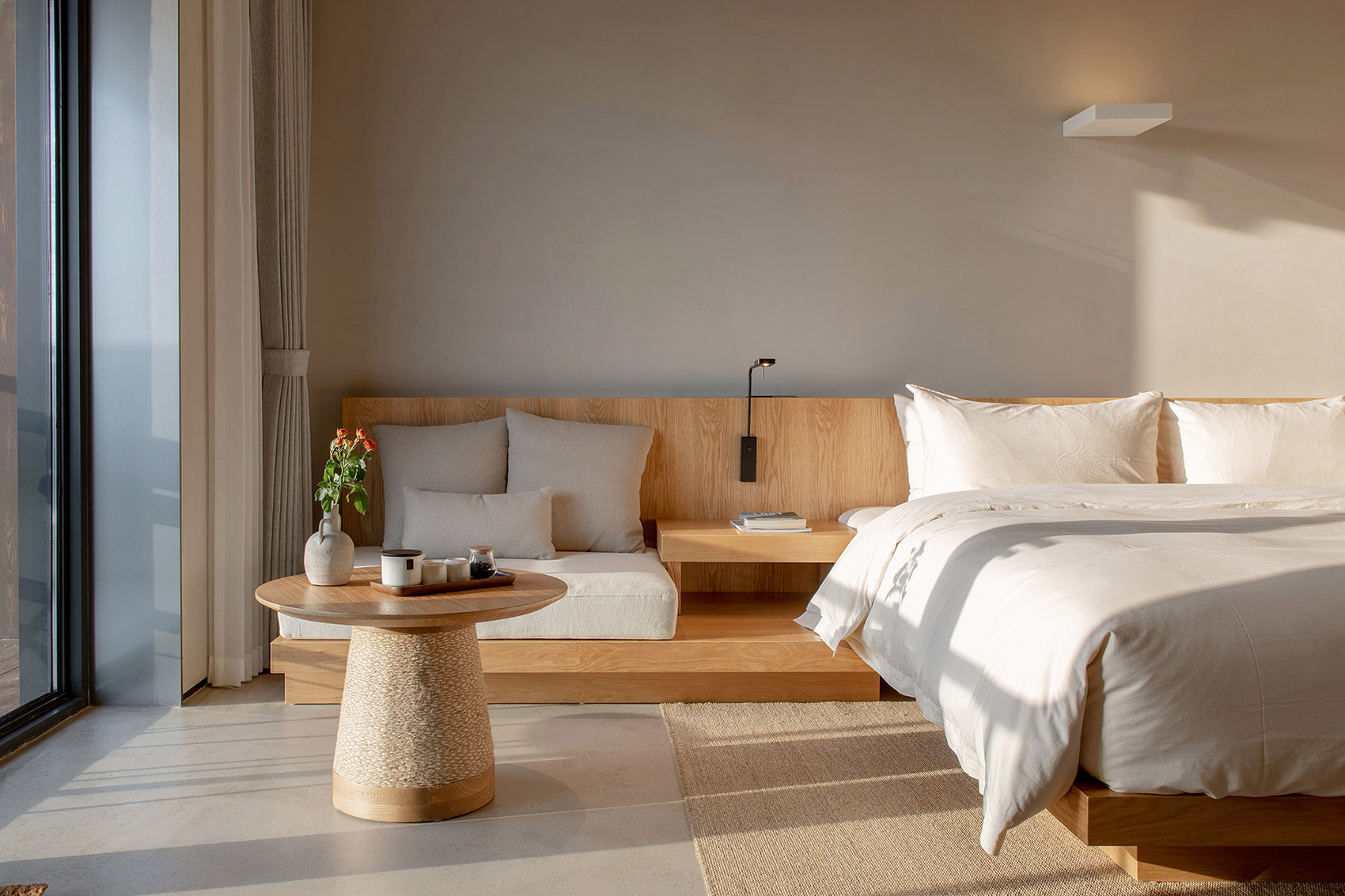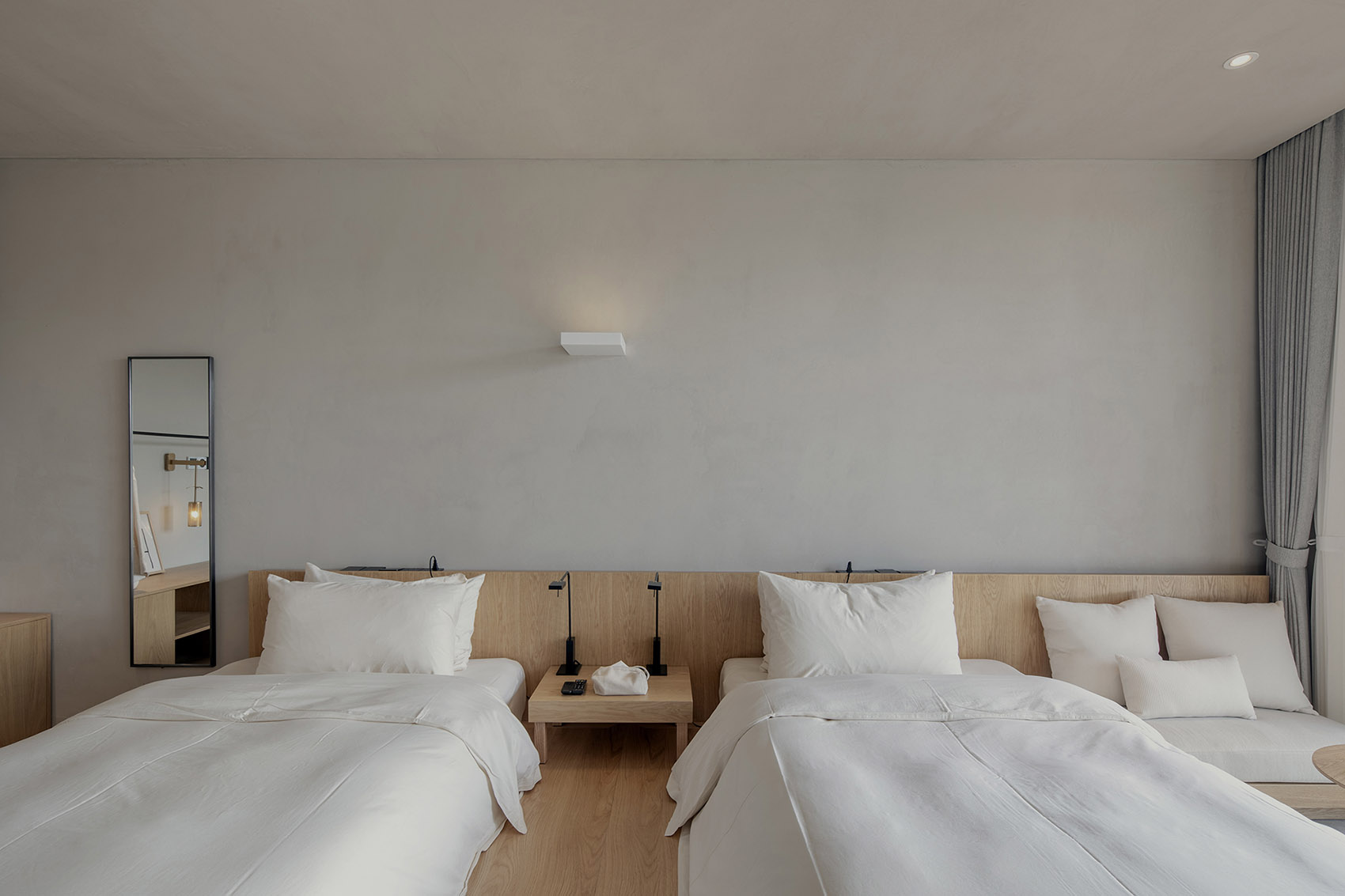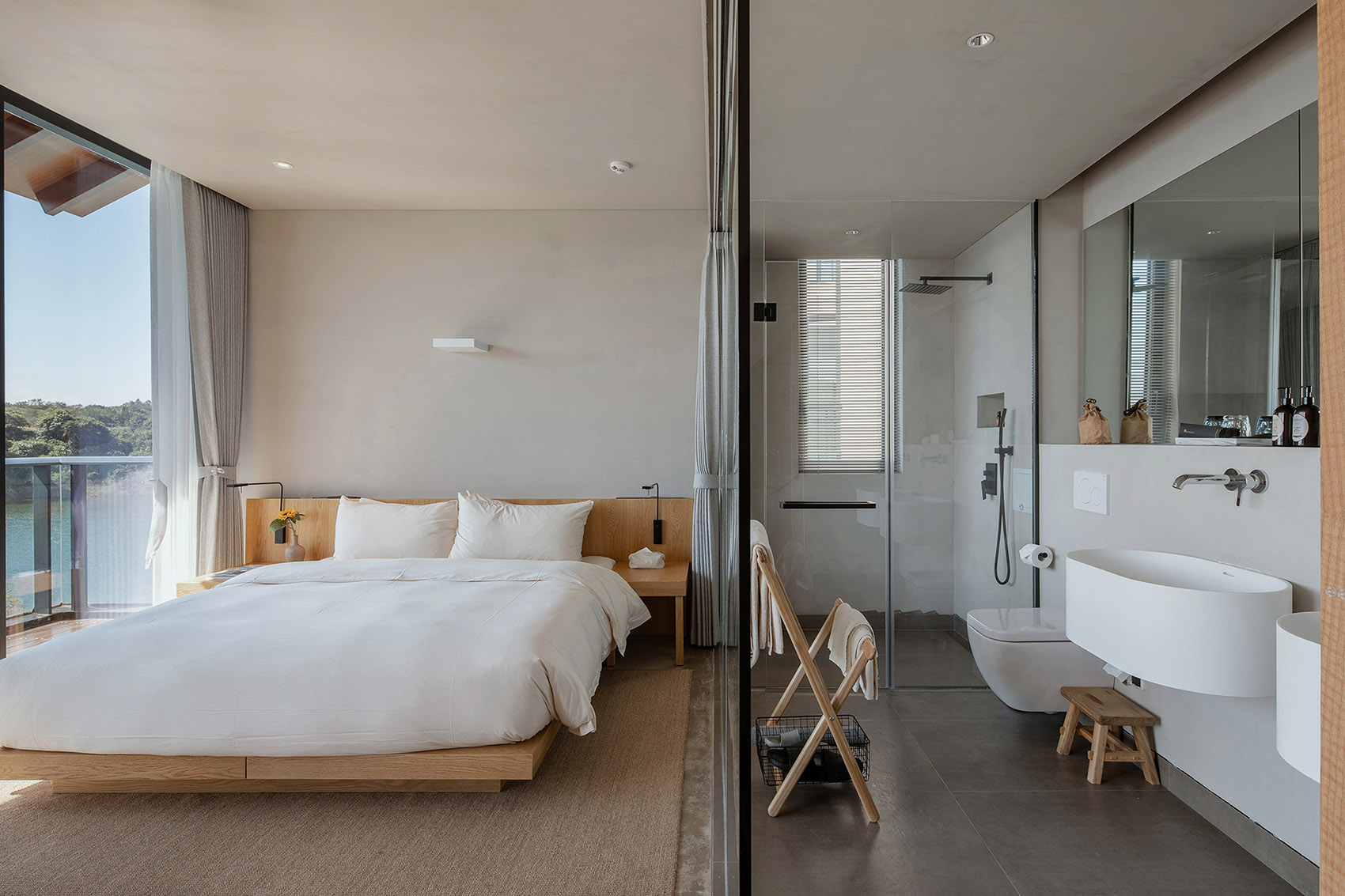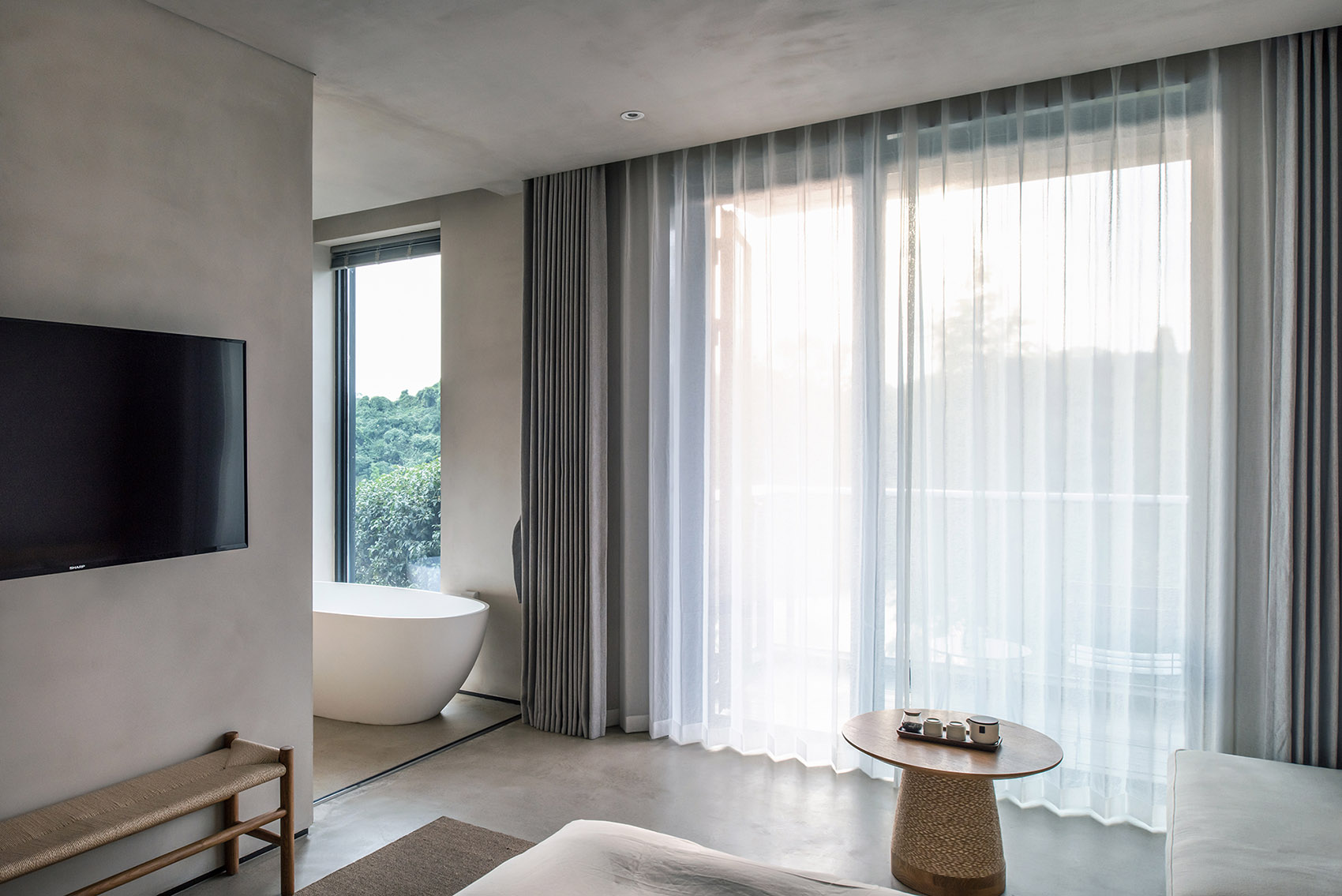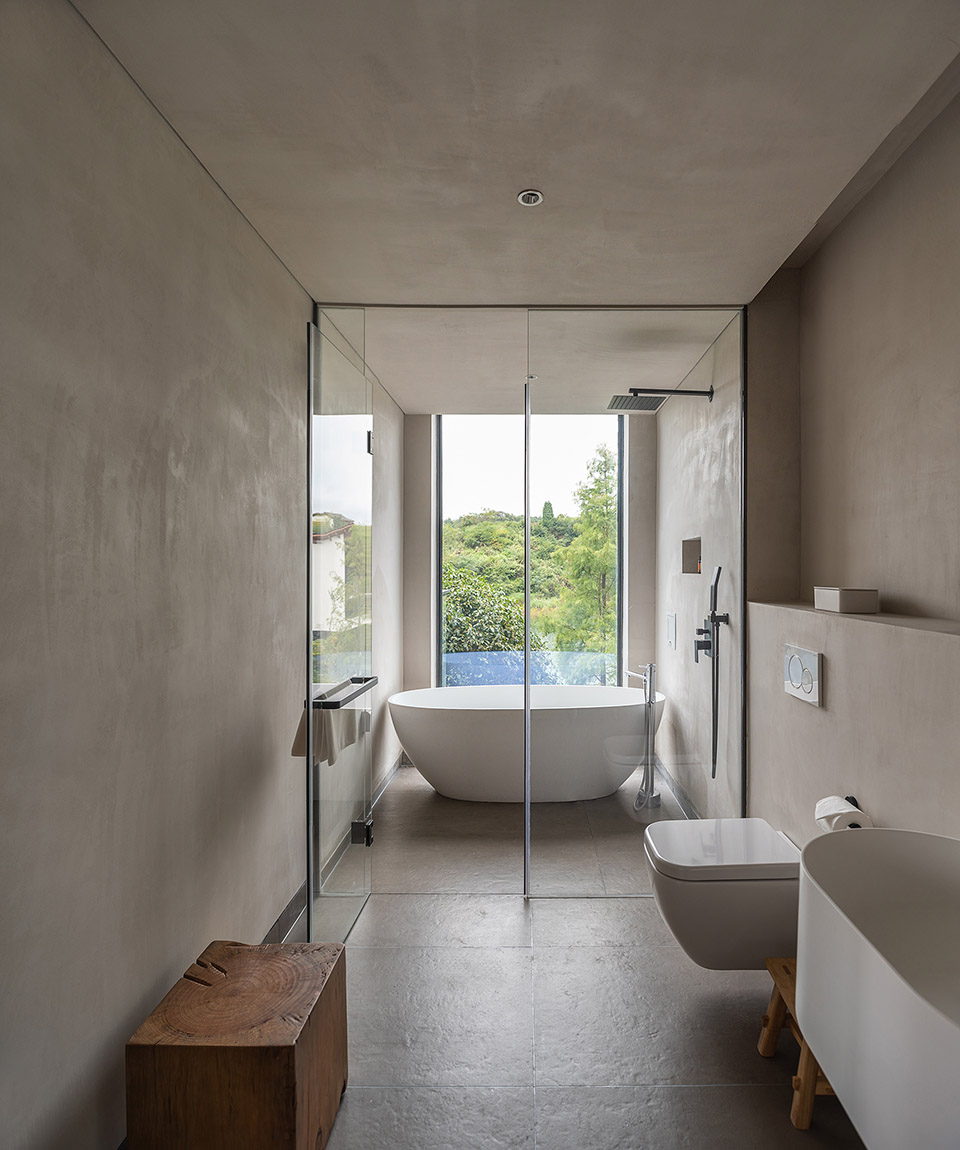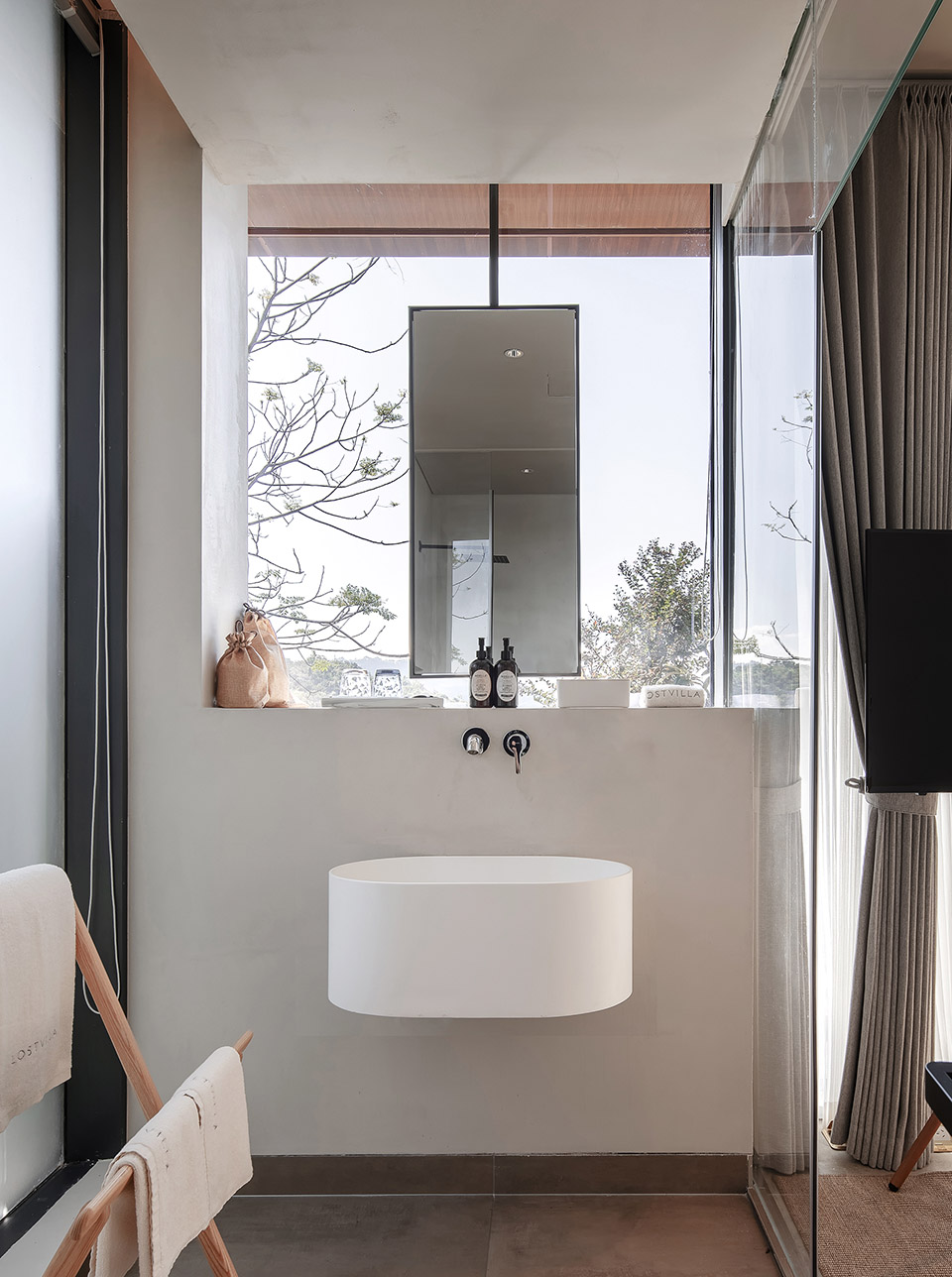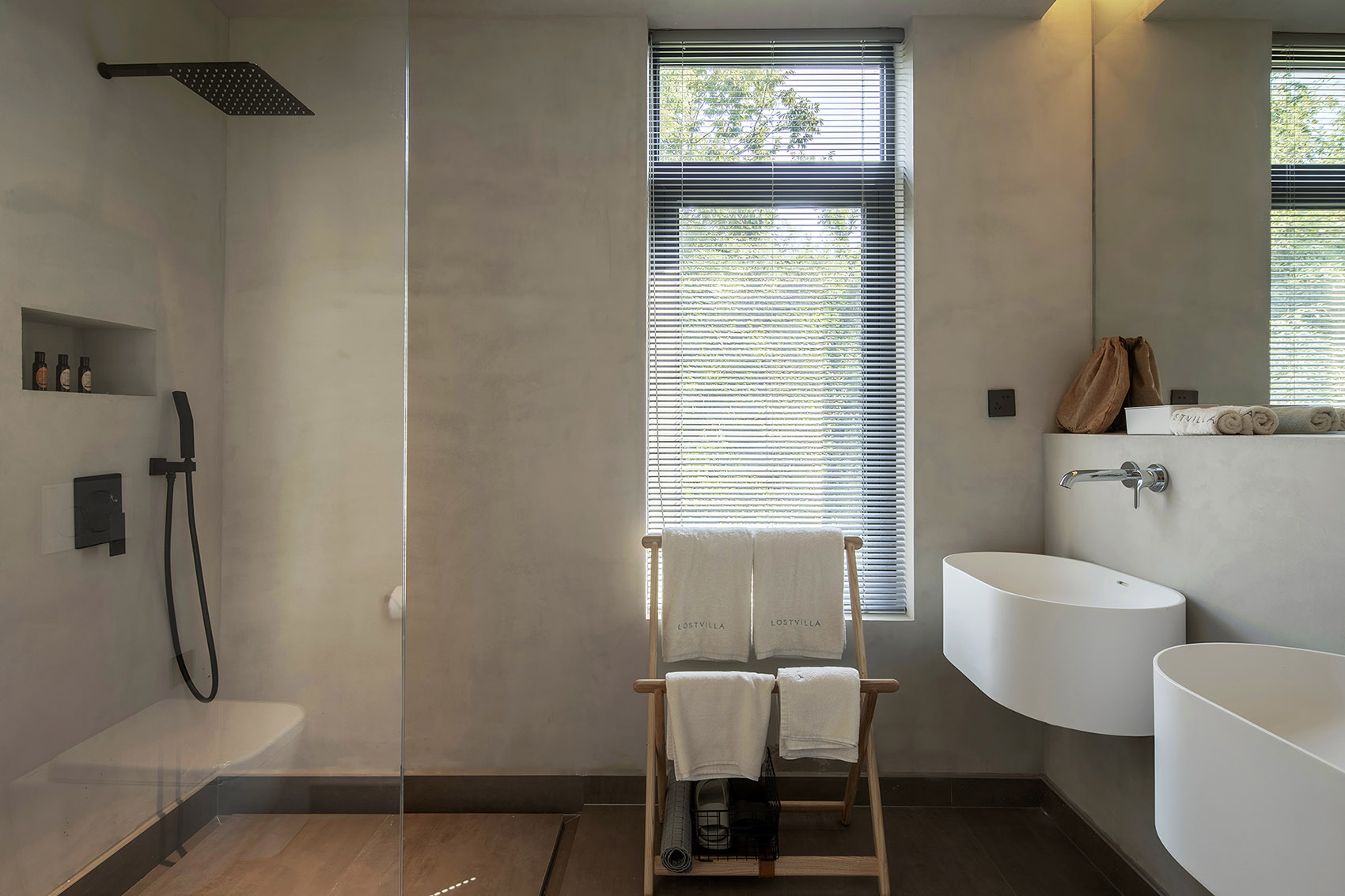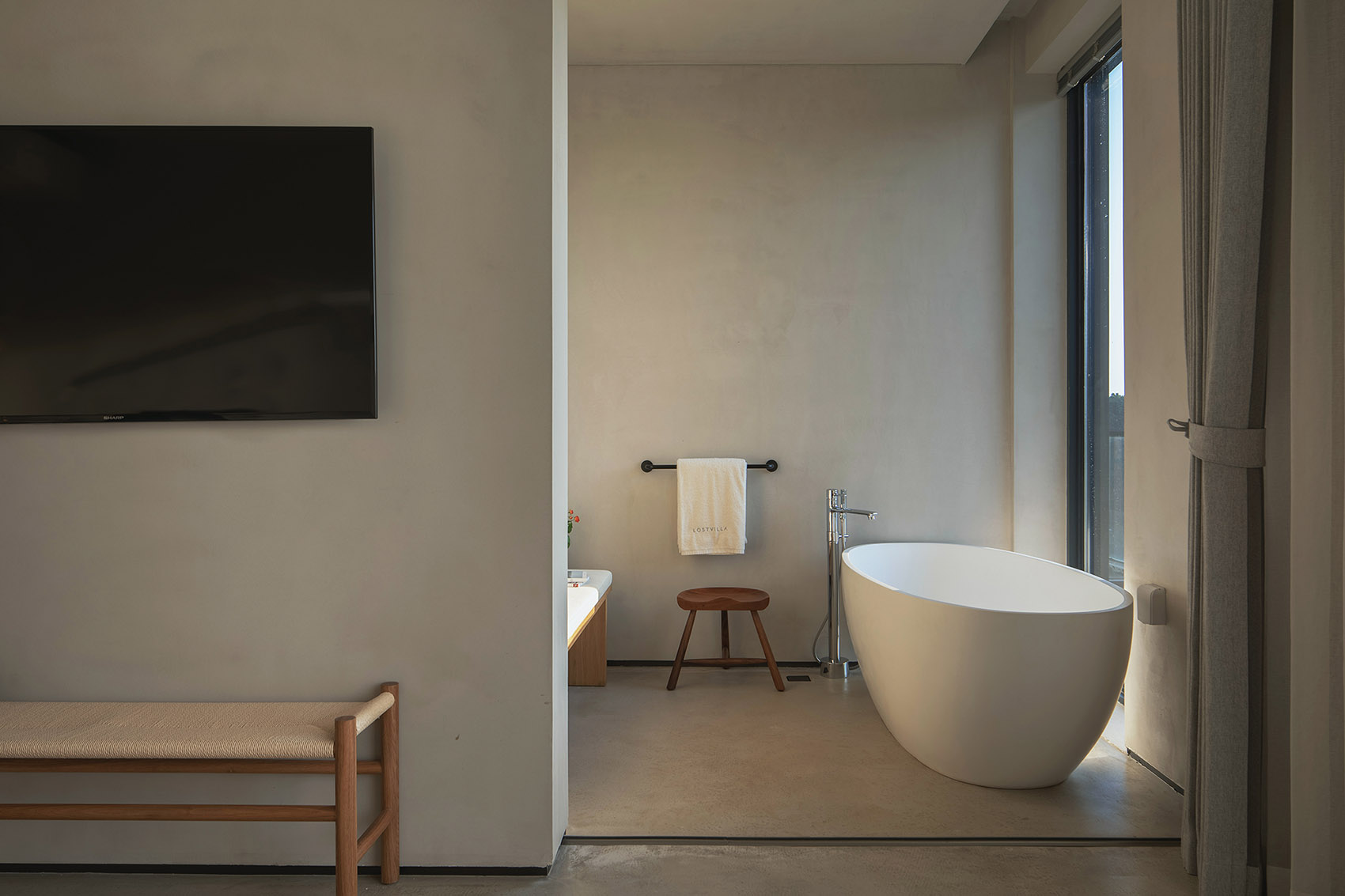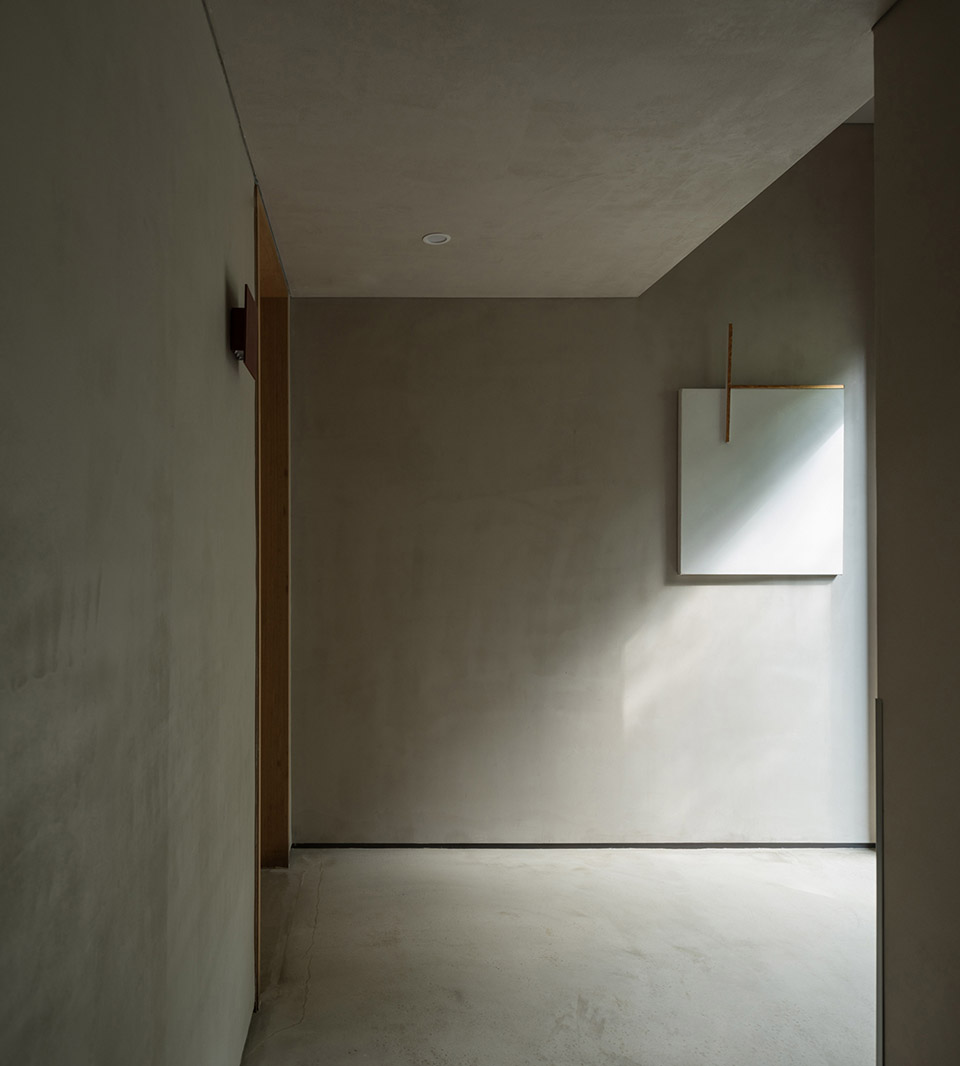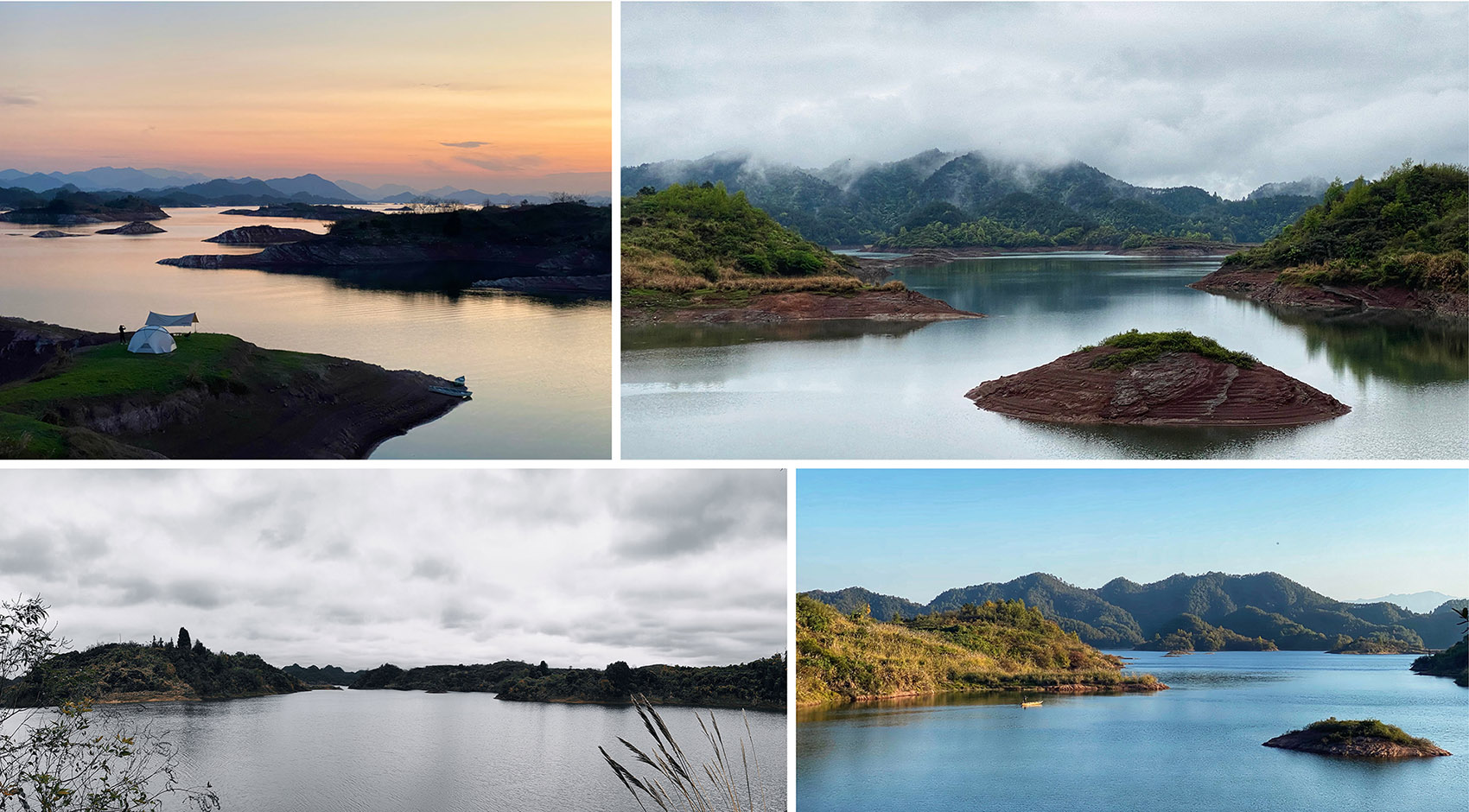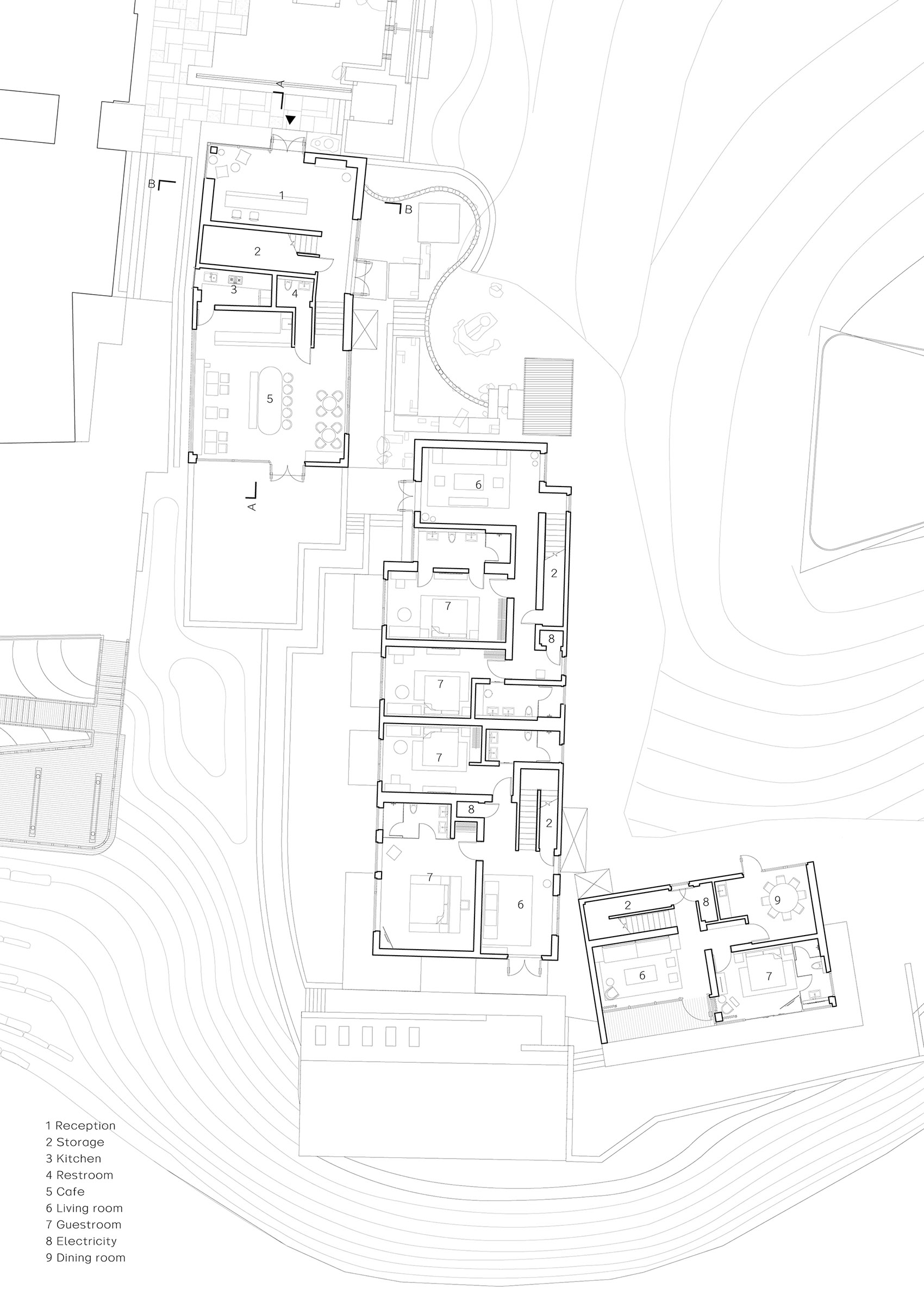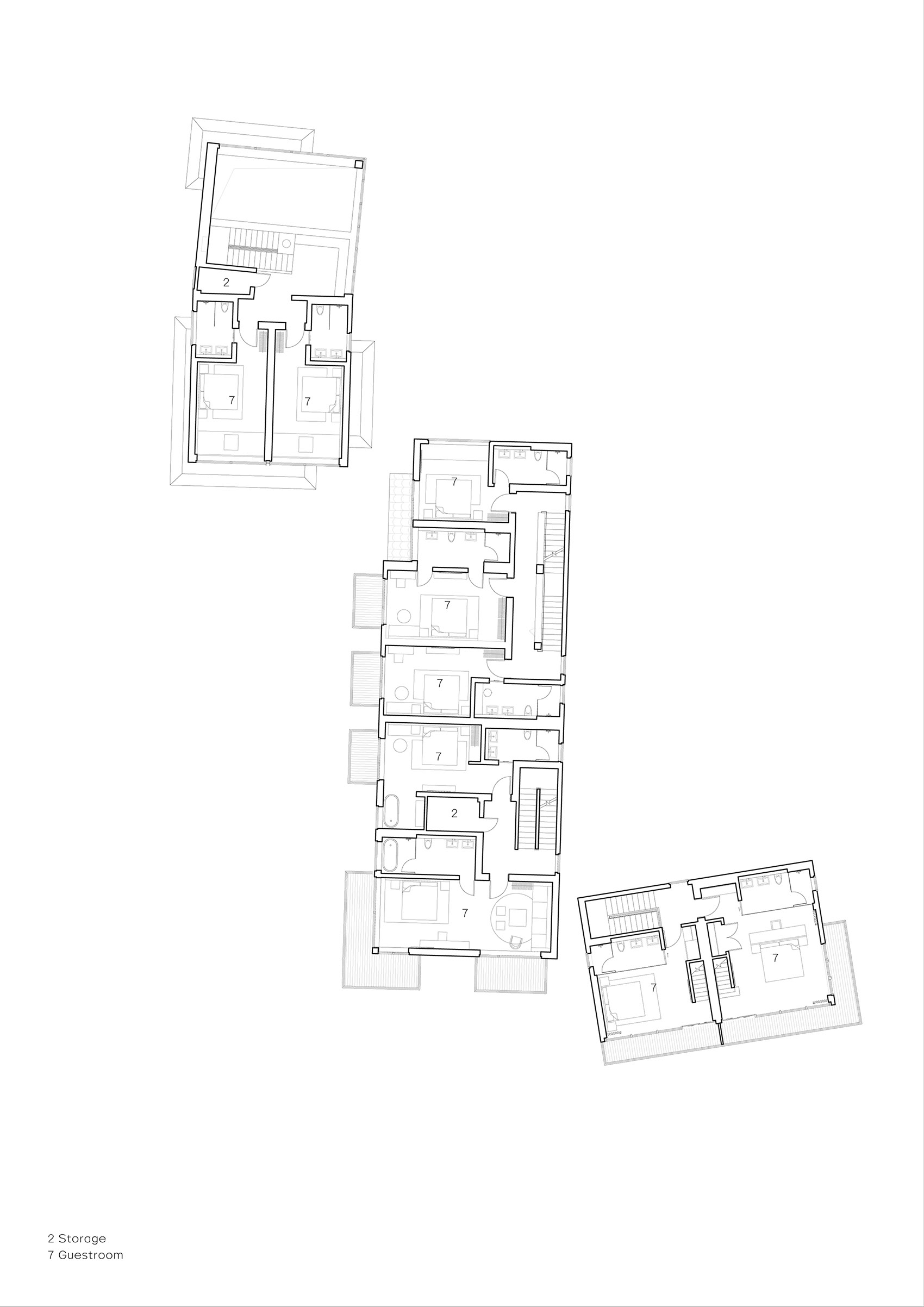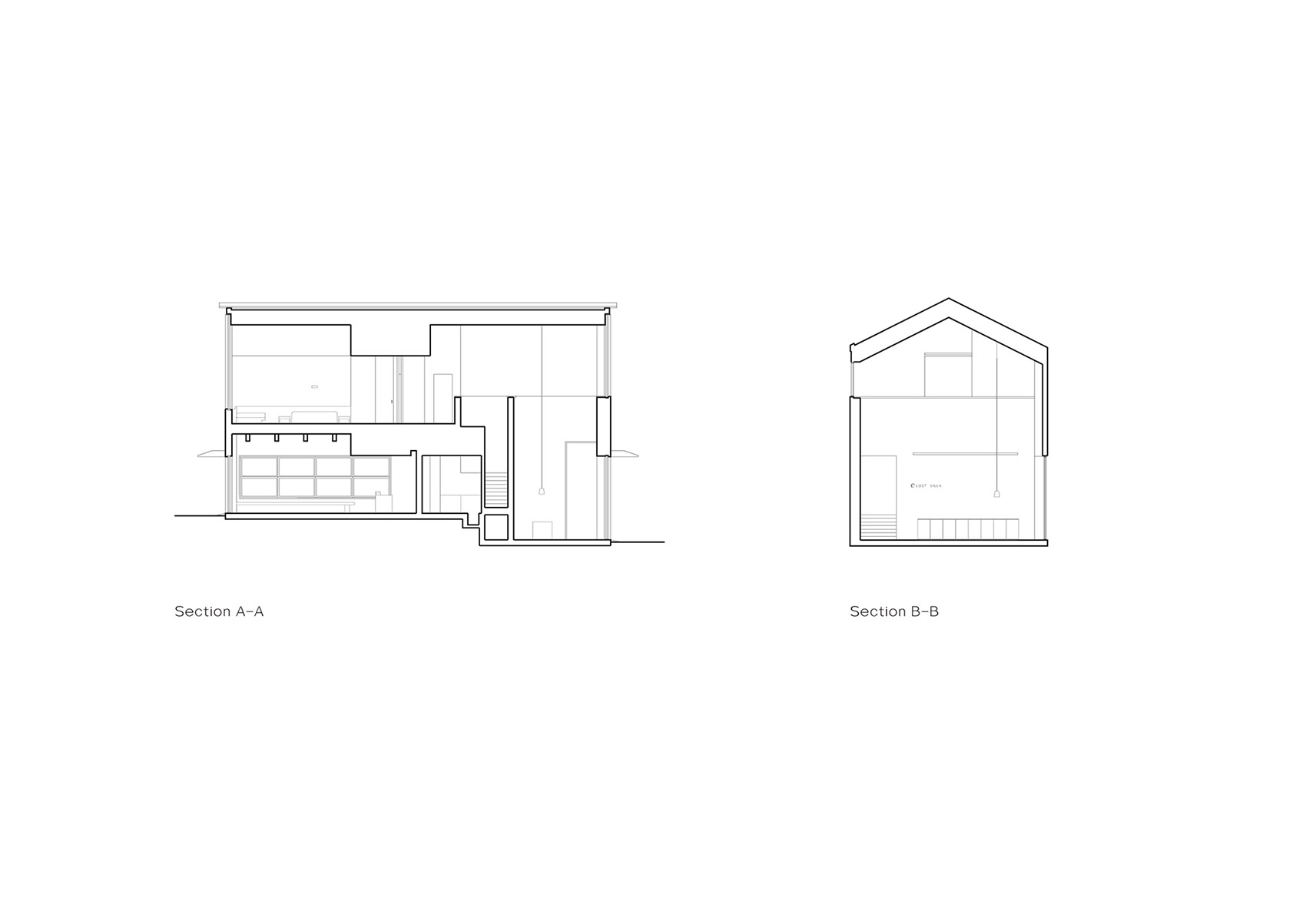第一原理(First Principle)最初是由亚里士多德提出的哲学概念,代表“一个最基本的命题或假设,不能被省略或删除,也不能被违反”。我们使用它作为对这个项目中复杂问题最基本的思考原则,从原初开始重新推演,剔除了僵化的经验式的空间语汇与个体过于主观的人为干预,在整个项目进程中不断溯源追问,以期从设计的过程和结果两个层面得到一个简单而接近项目本质的“第一性”空间。
▼视频,Video © 唐徐国
As a philosophic concept originally taught by Aristotelians, a First Principle is “a basic proposition or assumption that cannot be deduced from any other proposition or assumption.” In this project, it was utilized as the fundamental rule to solve all relevant complex problems. All deductions began from the primary basics, excluding the rigid empirical spatial vocabulary and the individual’s overly subjective human intervention. We constantly traced the source throughout the project, in order to obtain a “primary” space which is simple and close to the essence of the project, in terms of both design process and results.
▼金山坪村,从千岛湖看向基地,Jinshanping Village, from Qiandao Lake to site © 阿元
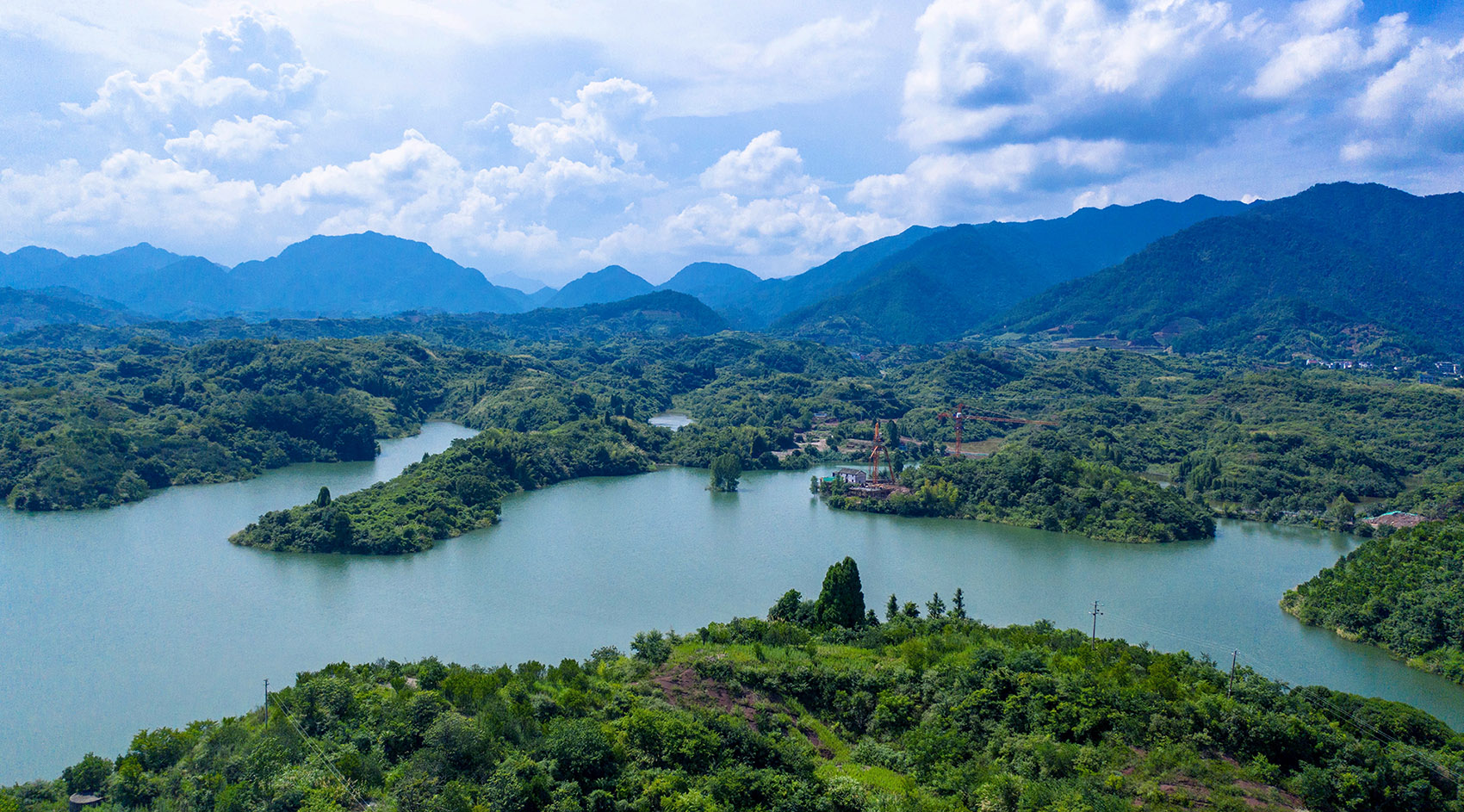
▼从大乐之野上方看向千岛湖,From above Lost Villa to Qiandao Lake © 唐徐国
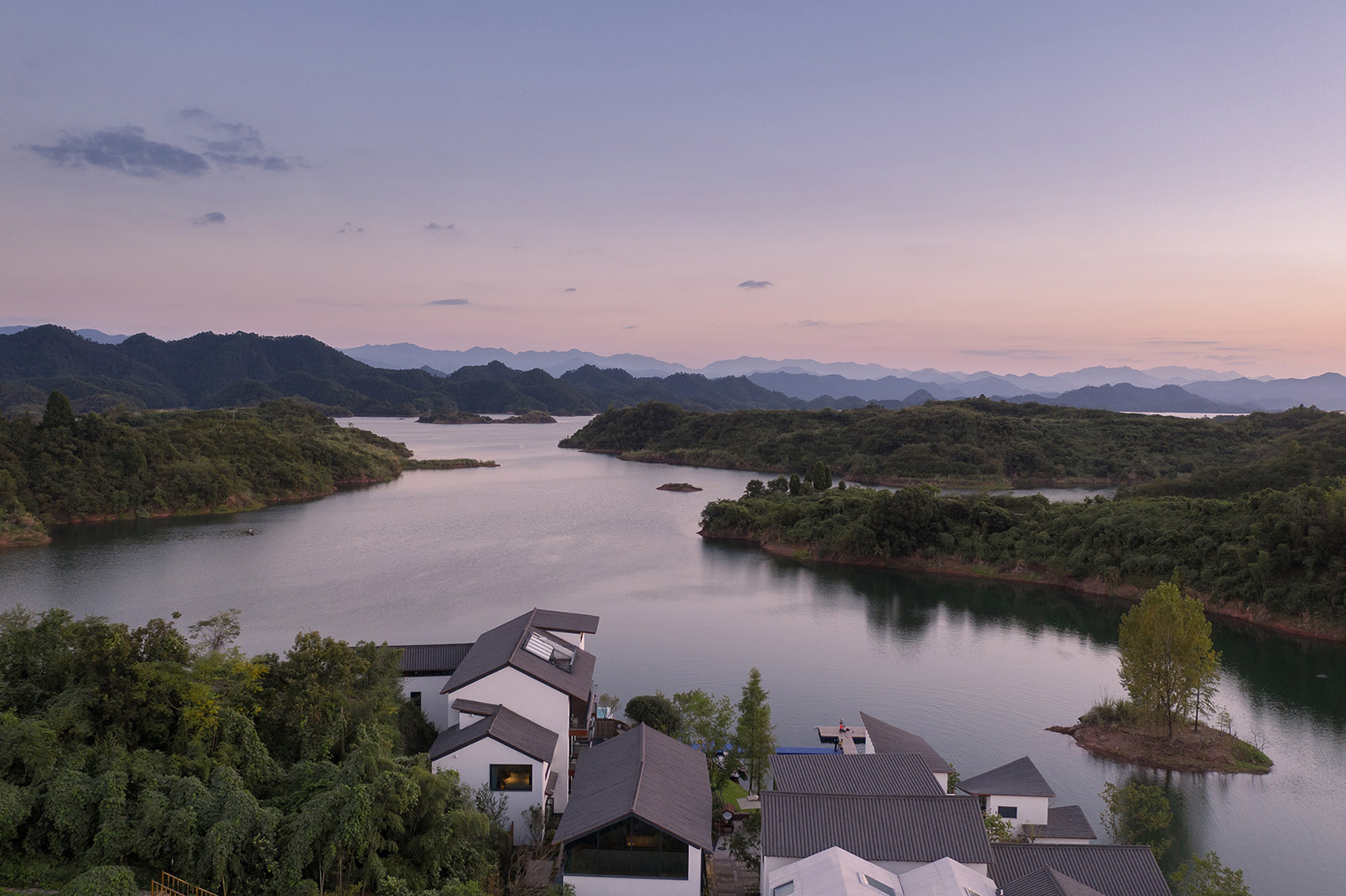
在千岛湖西侧水岸交界的金山坪村,自然环境的最大化引入与人工痕迹的最大化退让成为了第一设计原则。作为城市中喧嚣居住环境的反面,我们认为这个民宿空间最大的价值是帮助使用者得到内省式的自我回归。而这并非来自对外在环境的消极屏蔽,与之相反,在室内环境中,外部的自然环境恰恰成为了这一过程积极的路引。
In Jinshanping Village at the junction of the waterfront on the west side of Qiandao Lake, maximizing the introduction of natural environment and maximizing concession of artificial traces have become the first design principle. As the opposite of the noisy living environment in the city, we believe that the greatest value of this homestay space is to help users get an introspective self-return. And this does not come from the negative shielding of the external environment. On the contrary, in the indoor environment, the external natural environment has become a positive guide for this process.
▼C栋外观,Villa C exterior view © 史佳鑫 -天华建筑
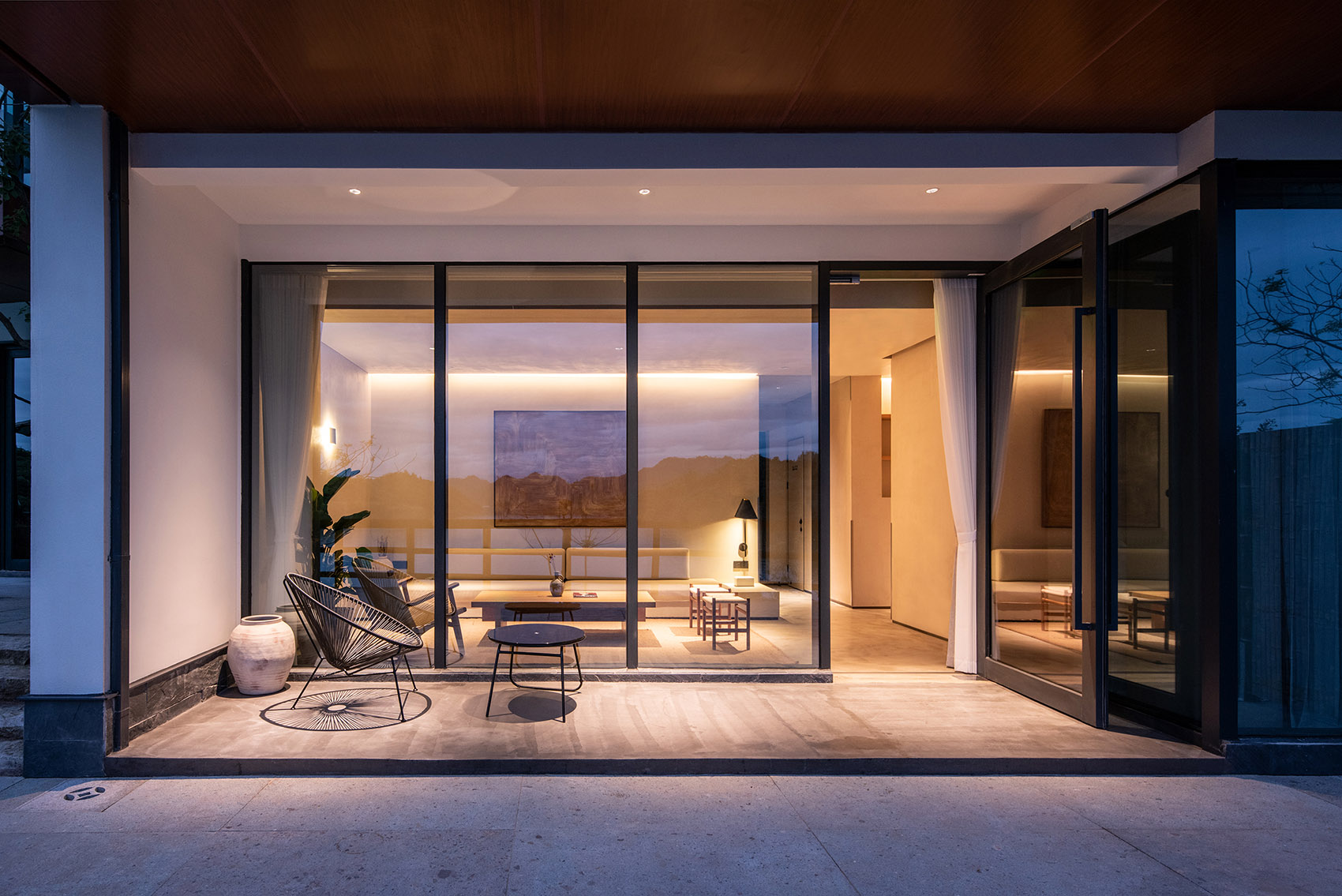
▼从C栋客厅的室外看向室内,以及玻璃反射中的千岛湖 © 侯睿 From outside to inside, the living room of Villa C and the reflection of Qiandao Lake

首先考虑的议题就是自然如何引入。
框景作为最直接的空间操作手段,在第一时间即成为了讨论的焦点。我们在介入项目之初与已进入施工图阶段的建筑设计团队进行了多次立面的调整,看与被看的基本论题被反复推敲,直到最后达成了一个相对平衡的状态。
The first issue to consider was how to introduce nature.
As the most direct means of spatial manipulation, framed scenery became the focus of discussion in the first place. At the beginning of our intervention in the project, we carried out many facade adjustments with the architectural design team that had entered the construction drawing stage. The basic topics of seeing and being looked at were repeatedly scrutinized until we finally reached a relatively balanced state.
▼公共区域,Public area ©史佳鑫

▼从A栋二层看向村庄和远山 ©史佳鑫 From 2nd Floor of Villa A to the village and mountains
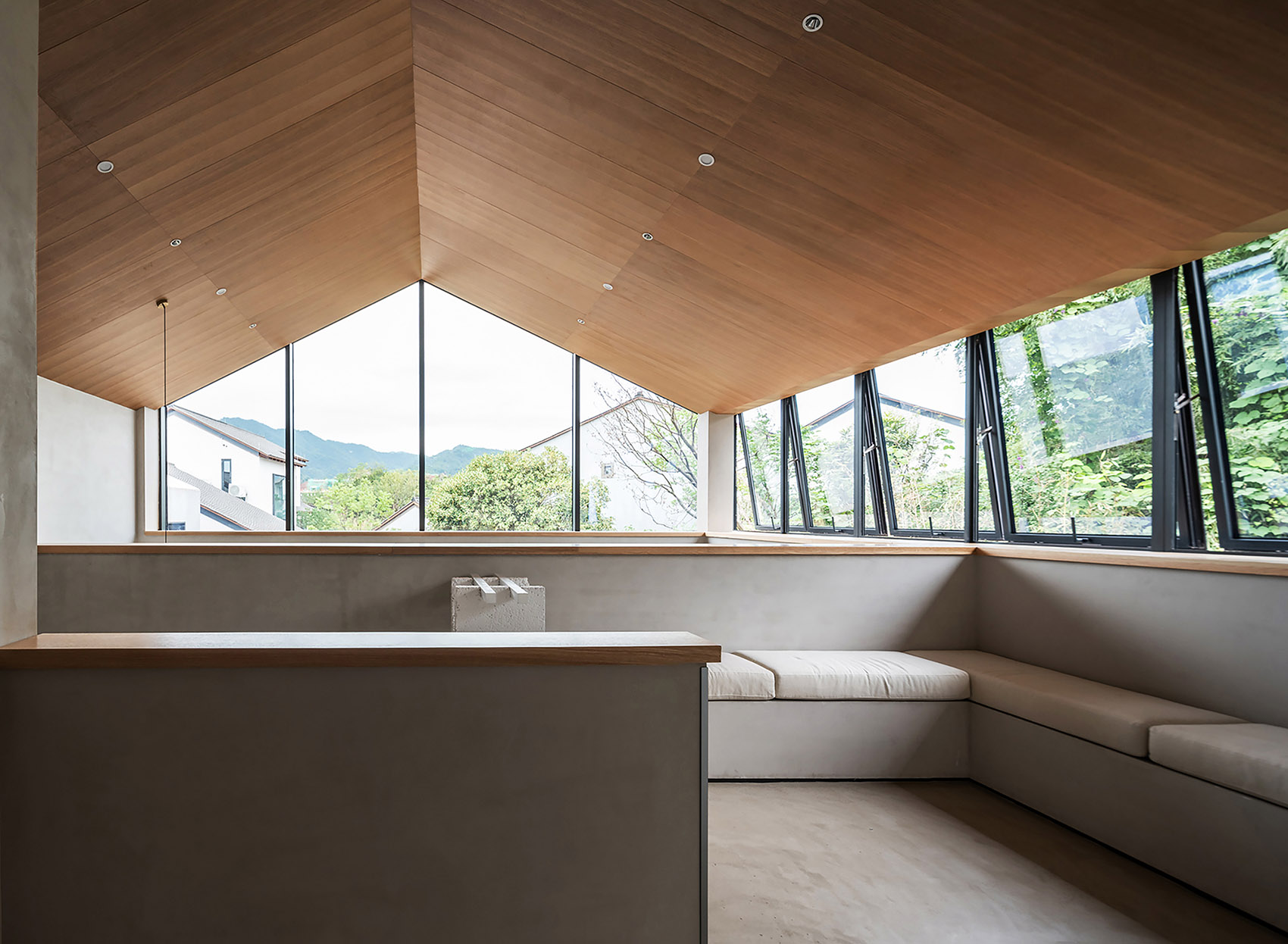
▼C栋二层的客房,落地窗带来的连续景观面 © 唐徐国 Guestroom on the 2nd Floor of Villa C, continuous scenery view
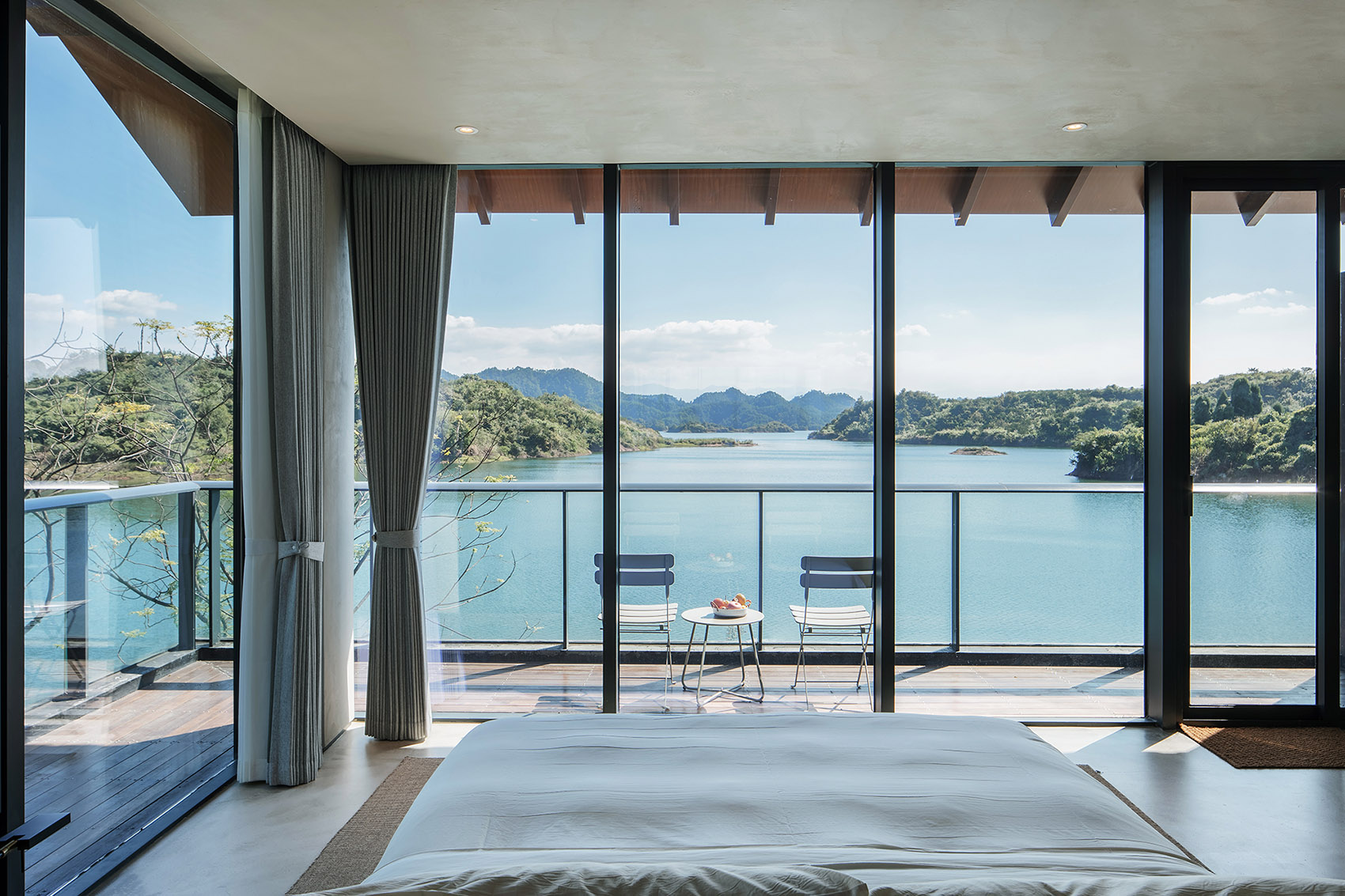
下一步,室内空间的物质性被最大程度地削弱。
在形式操作的层面,以装饰性的手段将所有建筑工业化的表达抹去,没有结构的暴露,也尽可能隐藏了机电的痕迹,平整的天地墙将空间的高潮引向窗外的自然本身。
Next, the materiality of the indoor space was maximally weakened.
At the level of formal operation, all the expressions of industrialization of the building were erased with decorative means. There was no structural exposure, and traces of electromechanics were hidden as much as possible. The flat ceiling, floors and walls led the climax of the space to the nature itself outside the window.
▼接待区域,Reception area ©史佳鑫
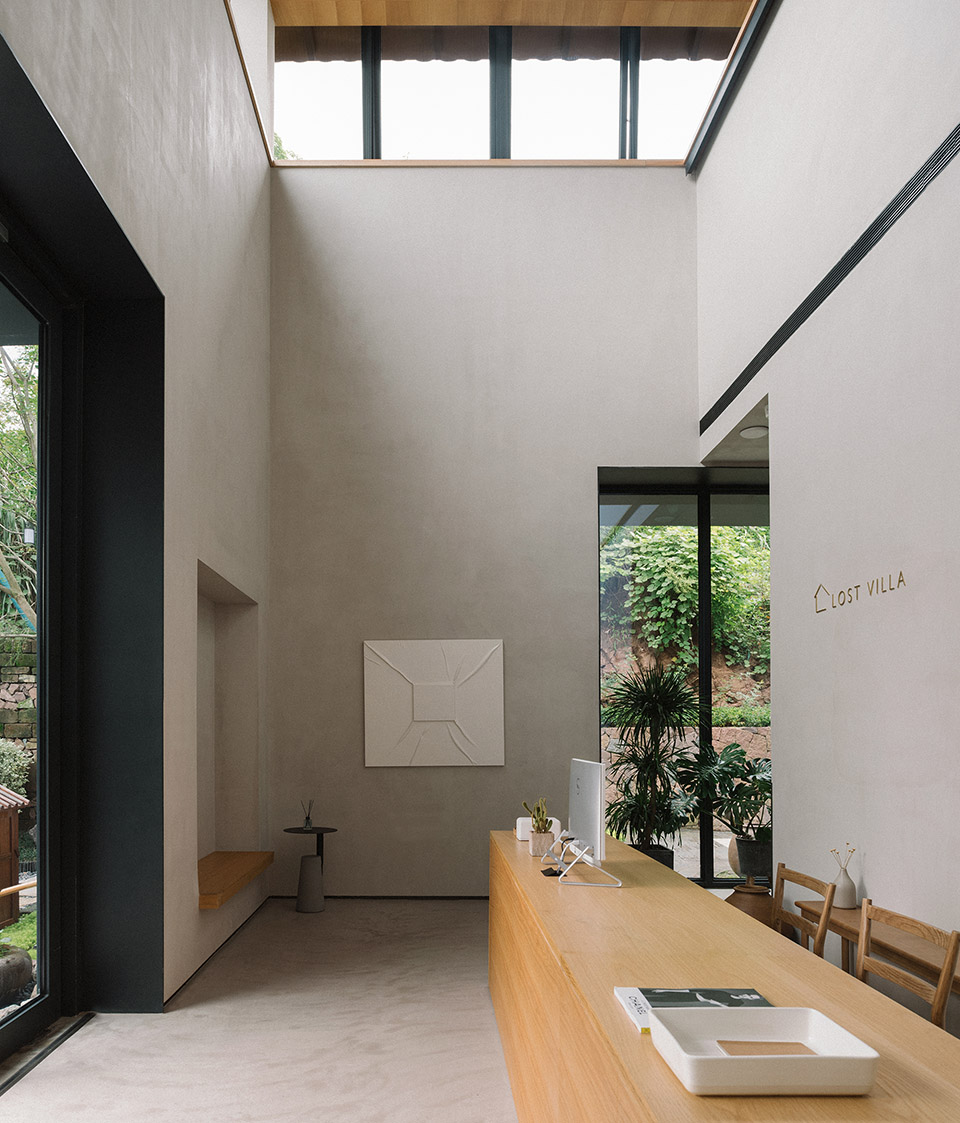
▼门厅,Lobby ©史佳鑫
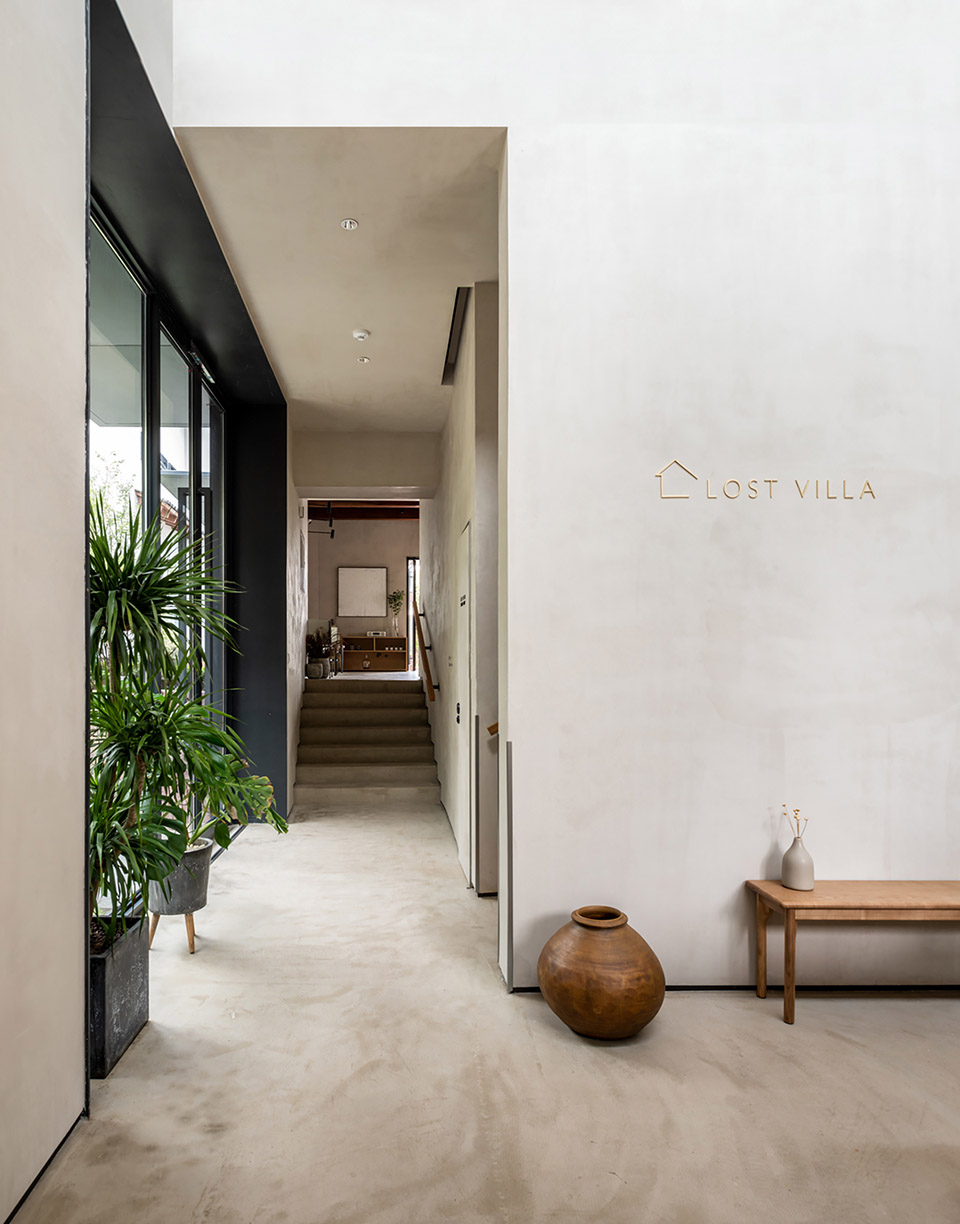
在材料操作的层面,用质朴的黑白灰色调与木材回应原始村落的记忆。不过分强调设计感也不刻意回避当代性,一切以和谐的氛围为主旨。
At the level of material manipulation, plain black, white and gray tones and wood were used to respond to the memory of the original village. Being not overemphasized the sense of design nor deliberately avoided contemporary, everything was based on a harmonious atmosphere.
▼客房概览,Guest room © 唐徐国

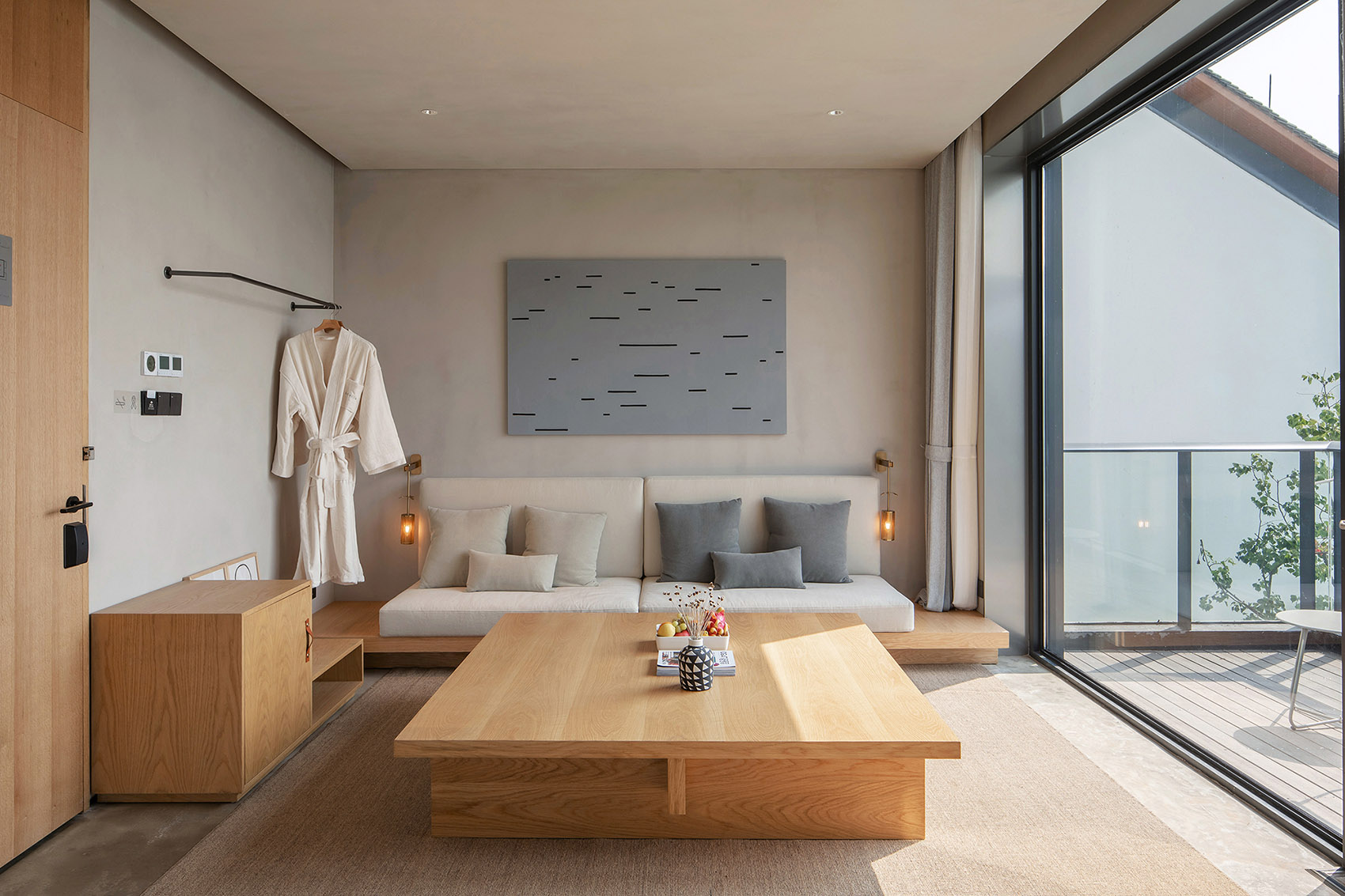
▼卧室和透明浴室,bedroom with a transparent bathroom © 唐徐国
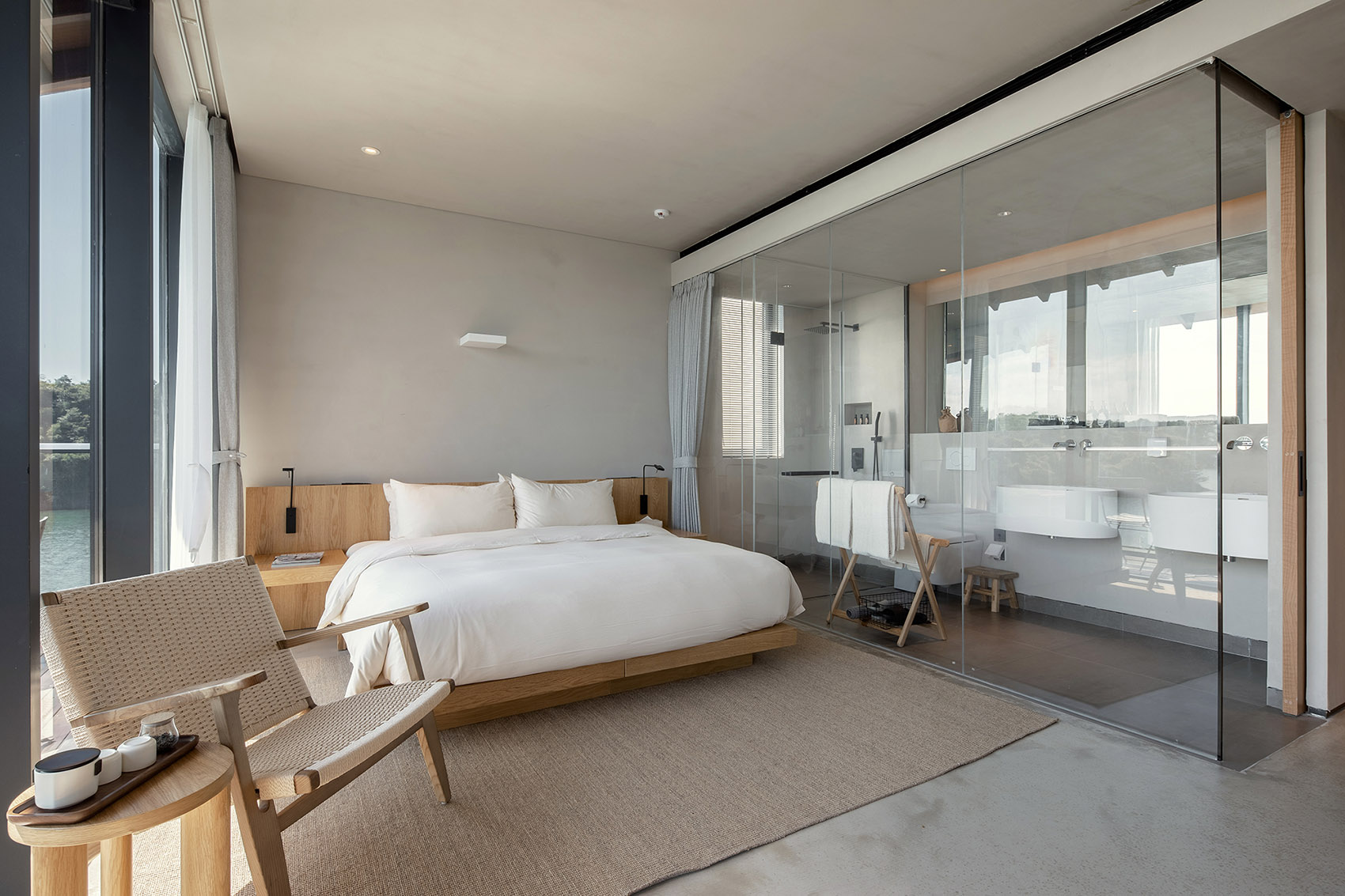
在器物选择的层面,恰当合用是判断的标准。在最大限度精简的前提下,满足功能使用上的舒适。
At the level of the selection of artifacts, proper use was the criterion for judgment. On the premise of maximal streamlining, they met the comfort of function use.
▼内饰细节,furnishing details ©史佳鑫

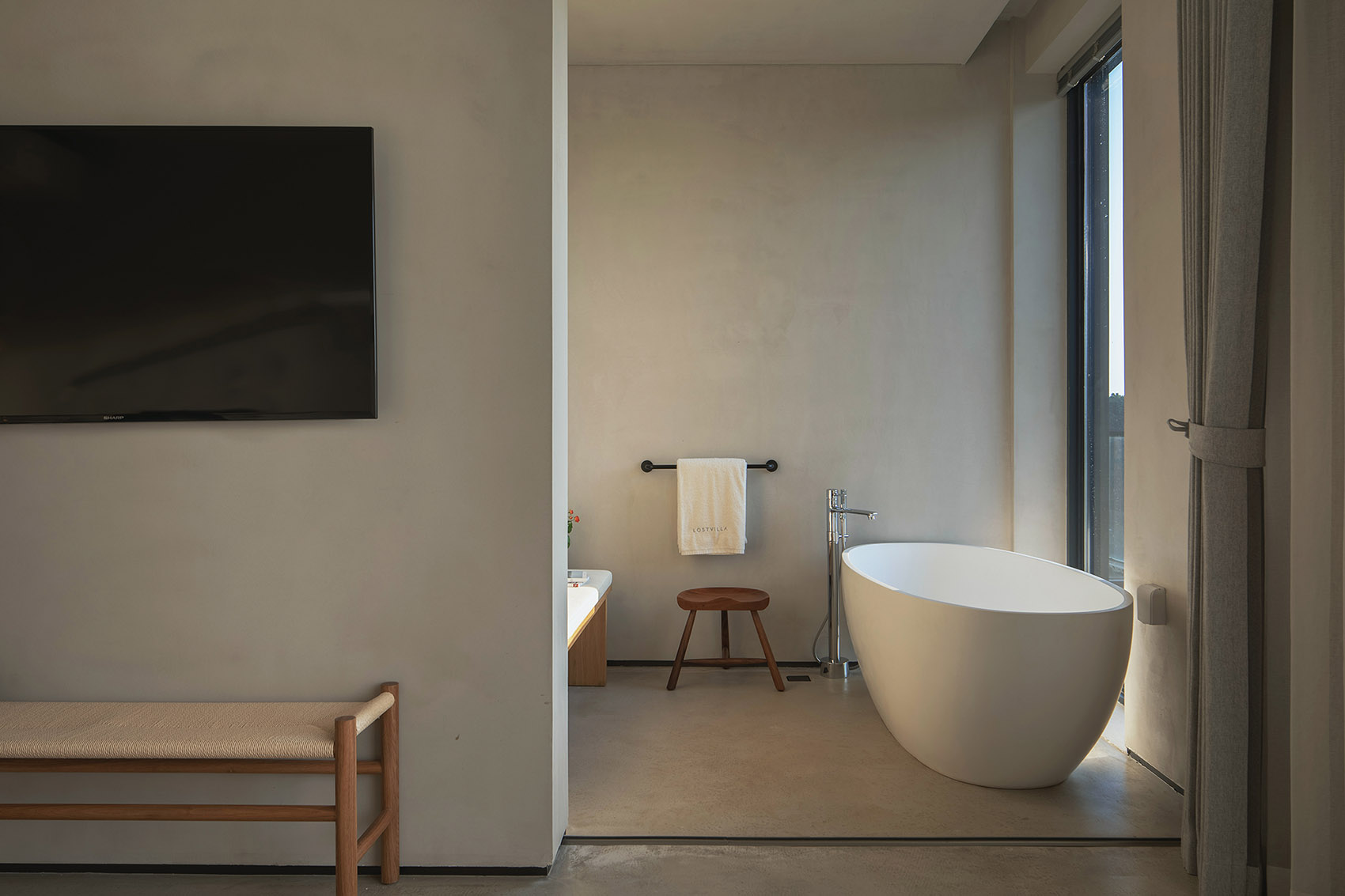
在执行这些操作的过程中,外部环境自然而然地成为了整个空间体验不可割裂的组成部分,而这种存在形式也恰好构成了对在地性的回应——剥去窗外的千岛湖,空间就不是完整的;而不同状态的外部环境又反过来赋予了同一空间几乎完全不同的性格。
▼基地周边的自然环境,在不同的天气条件下 © 大乐之野 Natural environment around the site,in different weather conditions
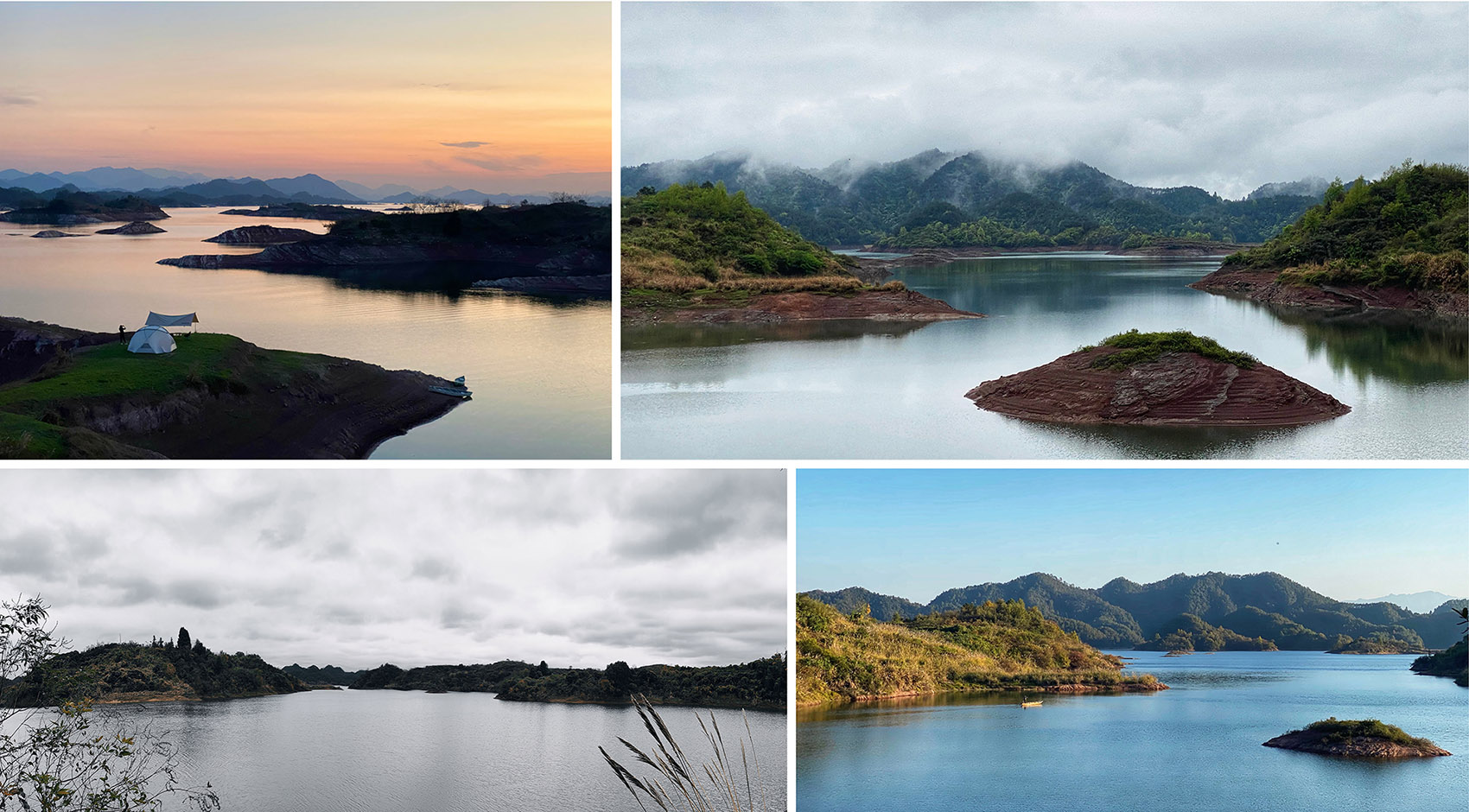
In the process of performing these operations, the external environment naturally became an inseparable part of the entire spatial experience, and this form of existence also happened to constitute a response to locality: stripping away the Qiandao Lake outside the window, the space would not be complete; and the external environment in different states in turn gives the same space almost completely different characters.
▼晴空夕阳下的阁楼房,Loft suite in sunset with clear sky © 唐徐国
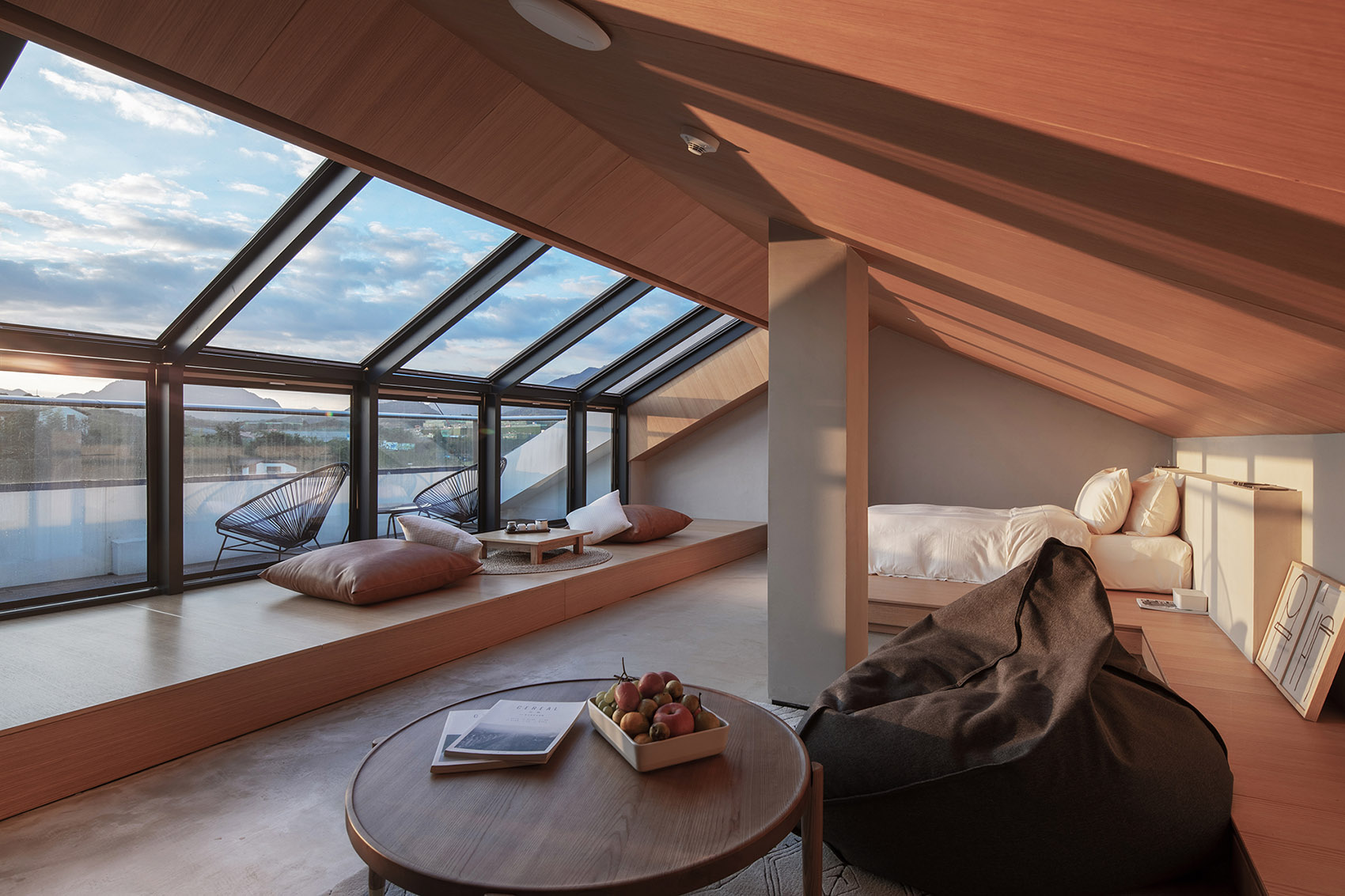
▼阴雨天气中的另一种表情,Another expression in a rainy day ©史佳鑫
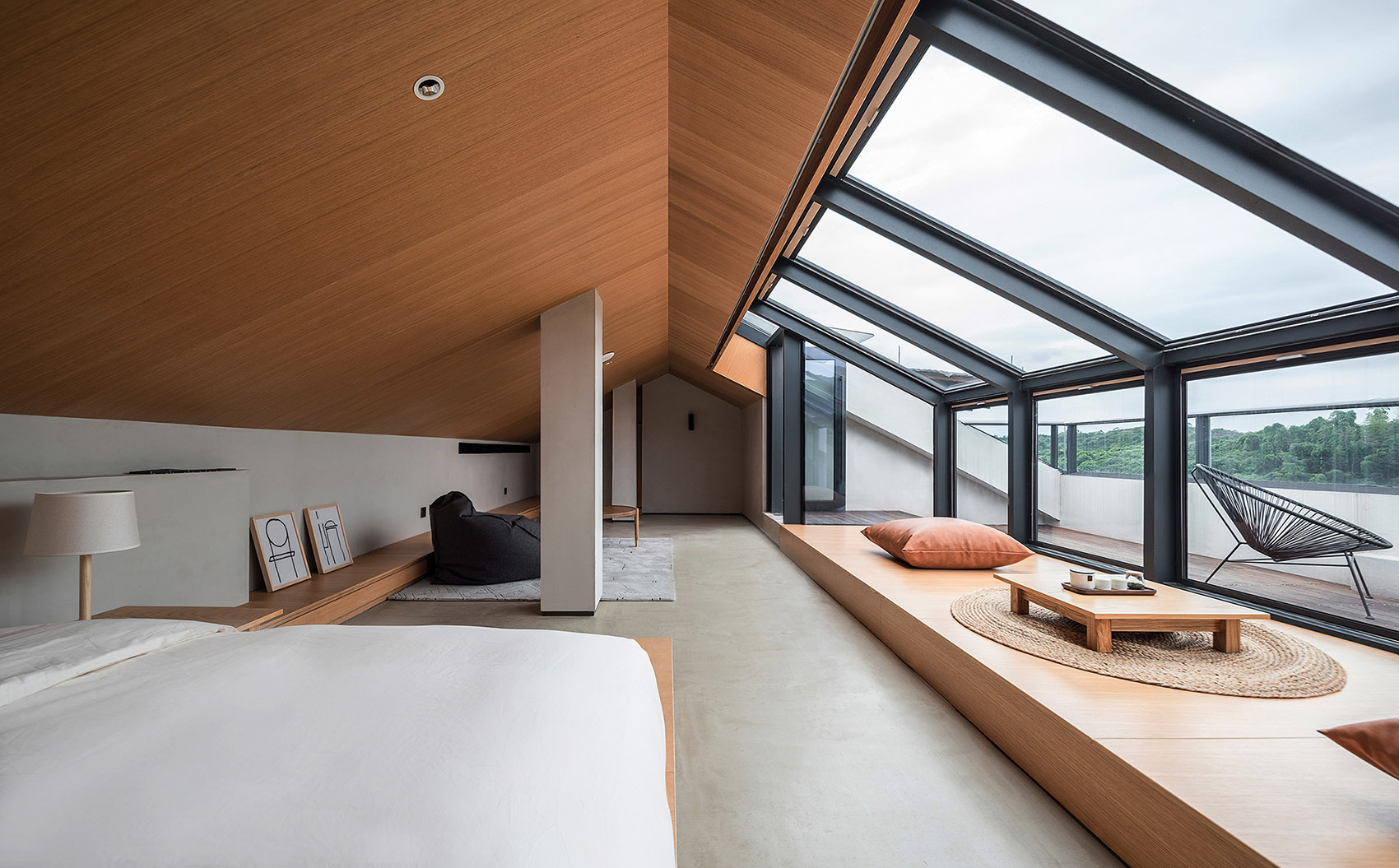

最终通过这一系列主动规避的过于主体性与竞争性的设计操作,空间与自然达成了礼貌的沟通与互相渗透的平衡。
Finally, through this series of design operations that actively circumvented subjectiveness and competitiveness, the space and nature reached a result of polite communication and mutual penetration.
▼根据不同的立面条件、不同的室内条件确定的不同框景做法(洗手间) ©史佳鑫 © 唐徐国 Different framed scenery operations depended on different façade considerations and interior circumstances

▼泳池平台,Pool terrace © 唐徐国-天华建筑
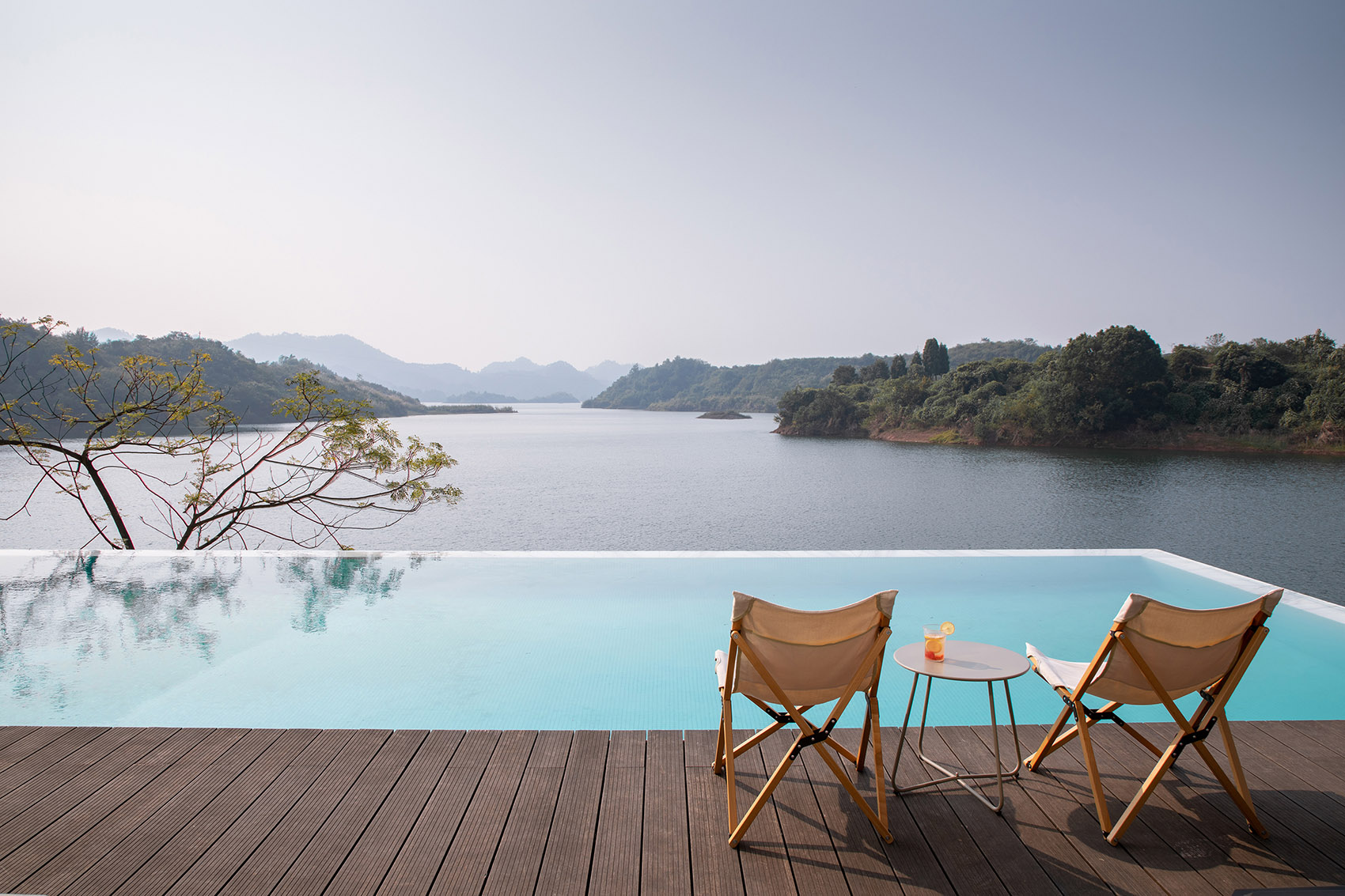
▼夜景,Night view © 唐徐国-天华建筑
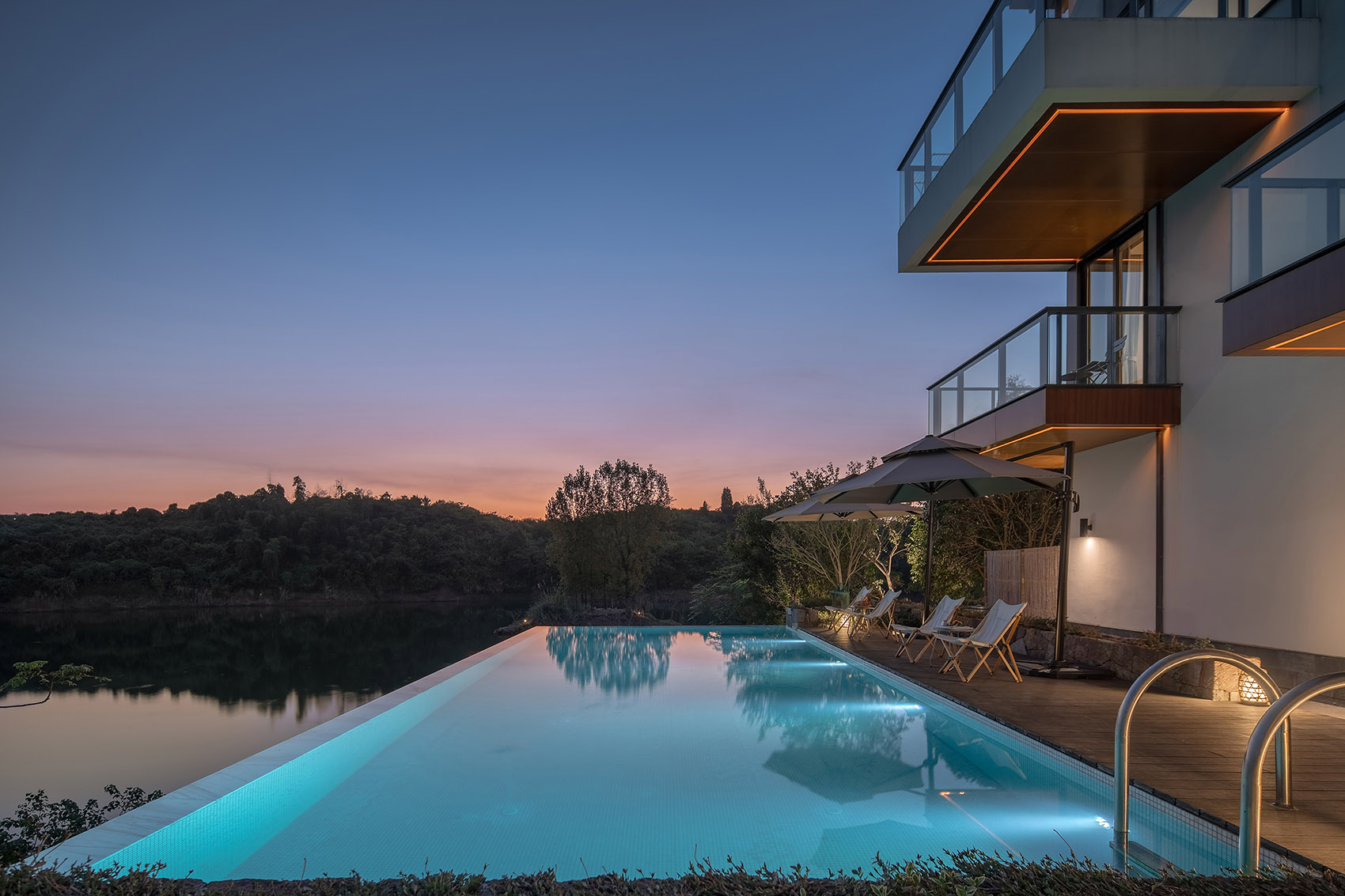
▼大乐之野 · 千岛湖,Lost Villa Qiandao Lake © 唐徐国-天华建筑

▼一层平面图,Ground floor plan © 即域建筑

▼剖面图,Sections © 即域建筑

